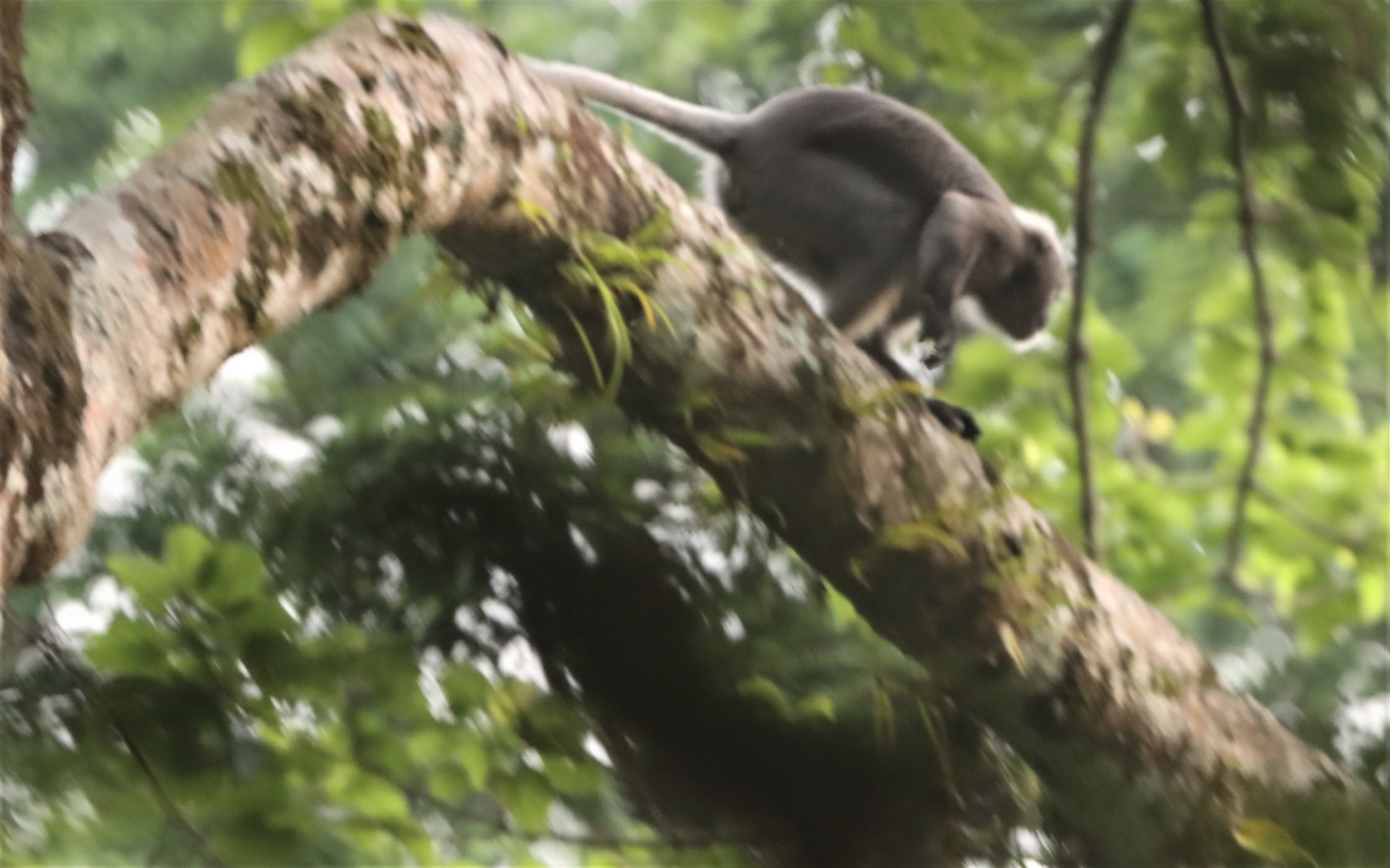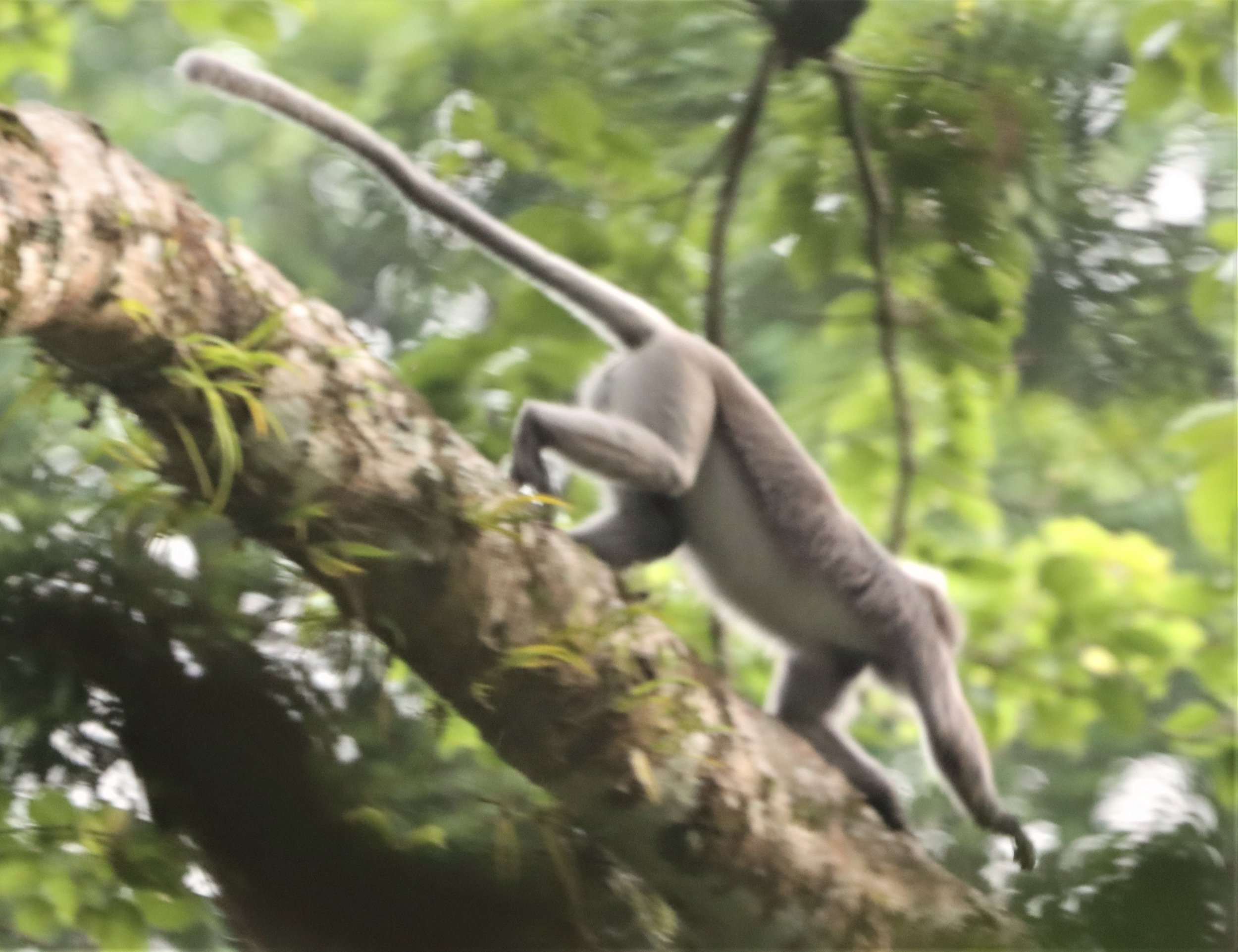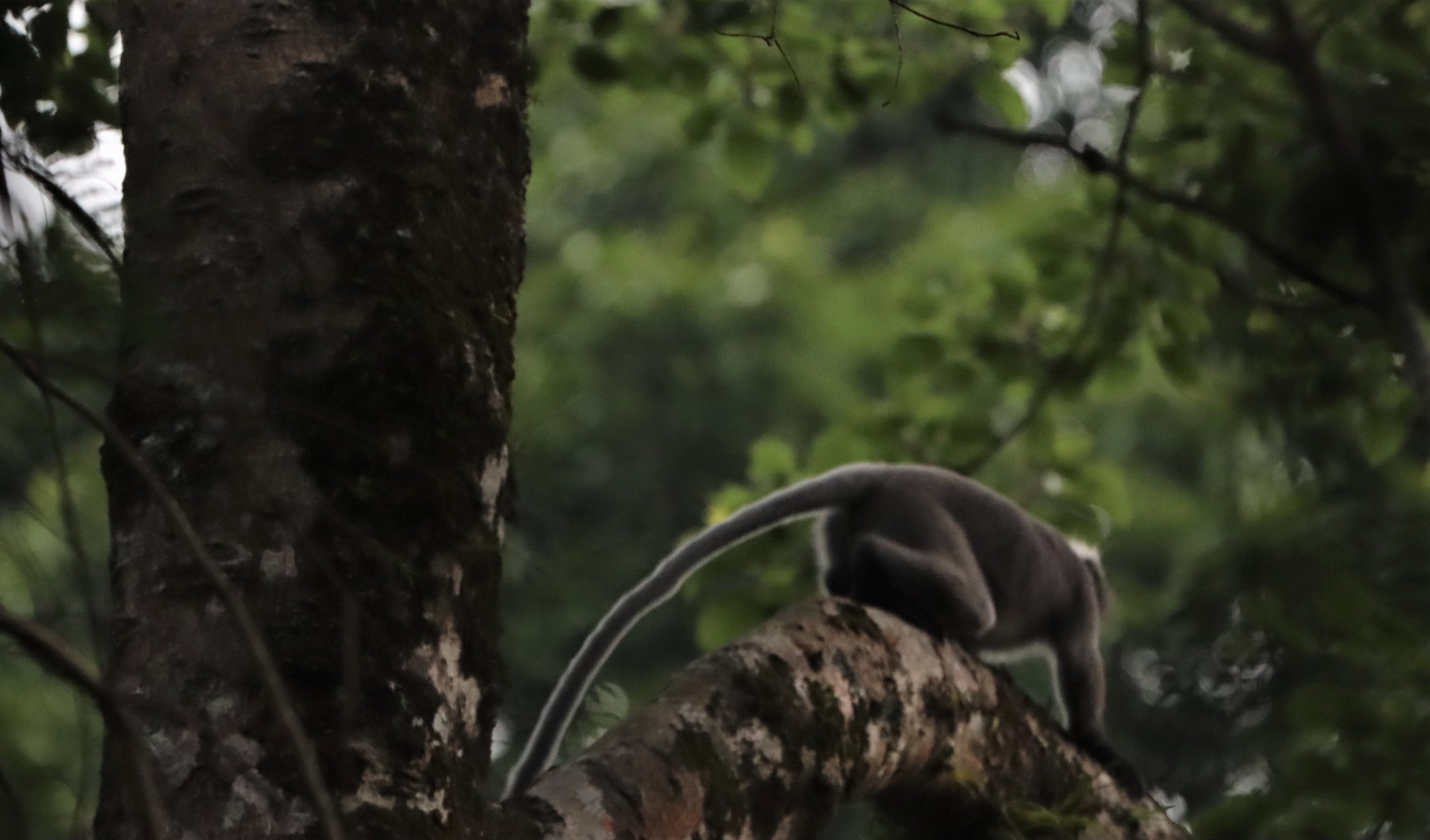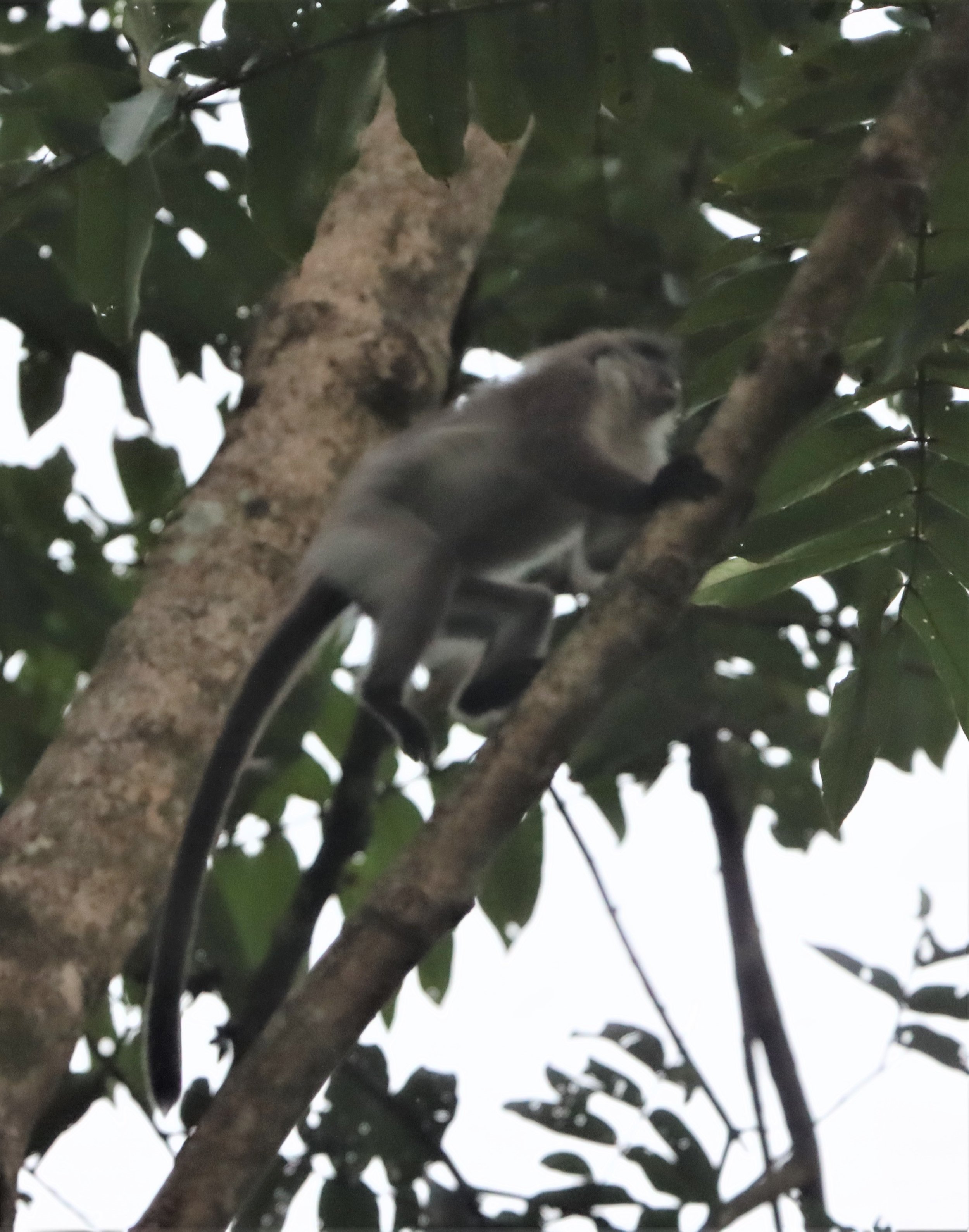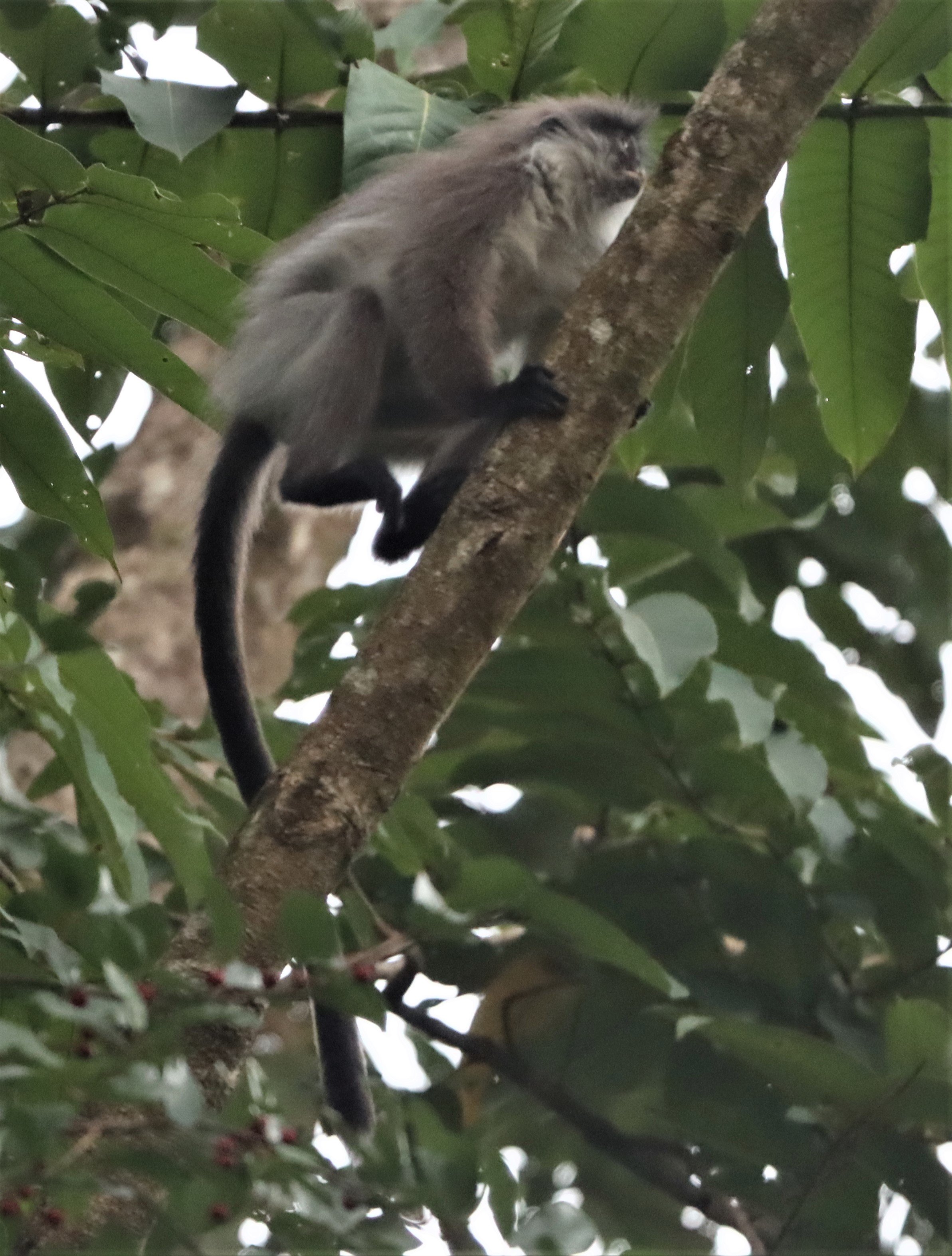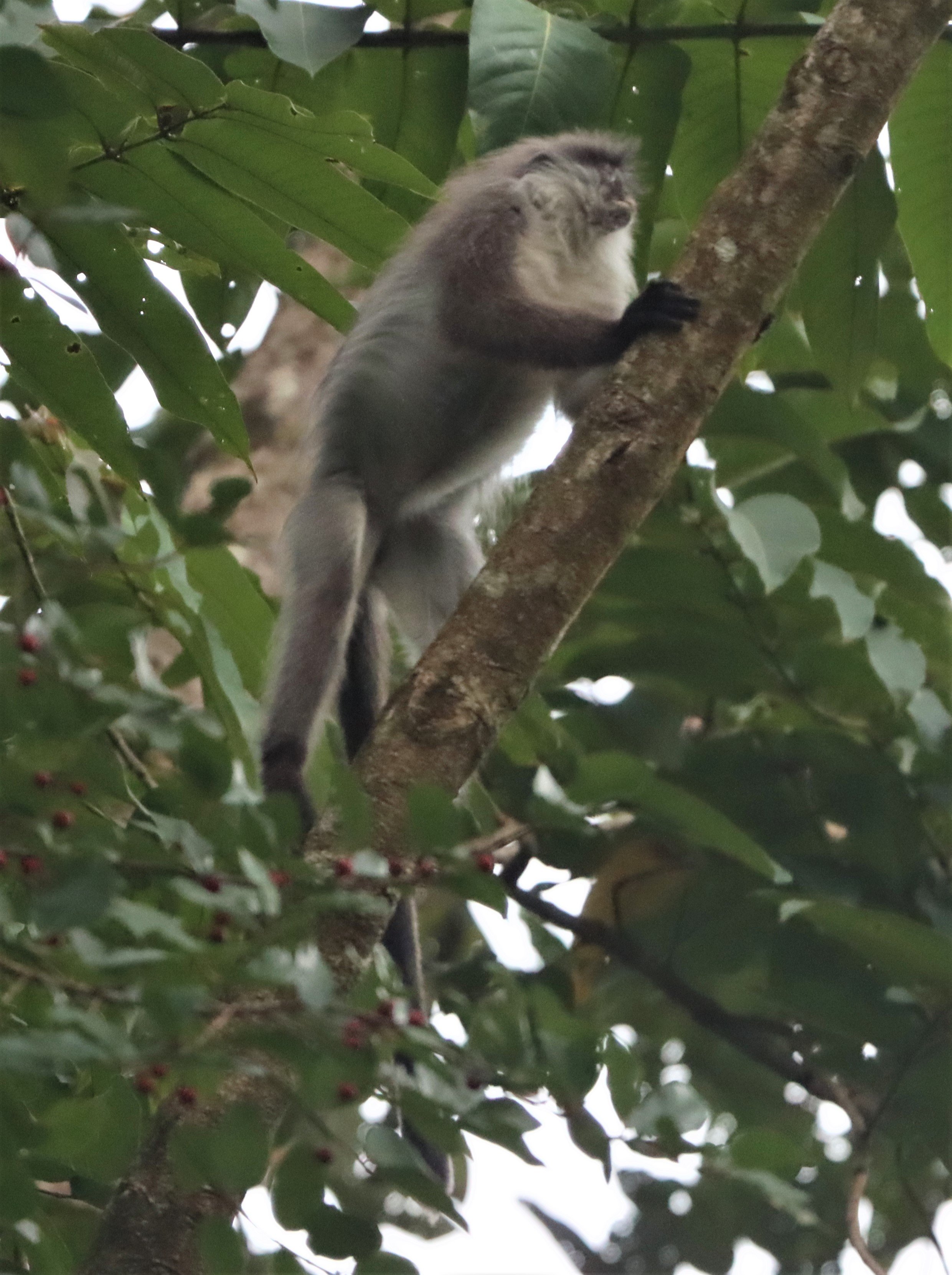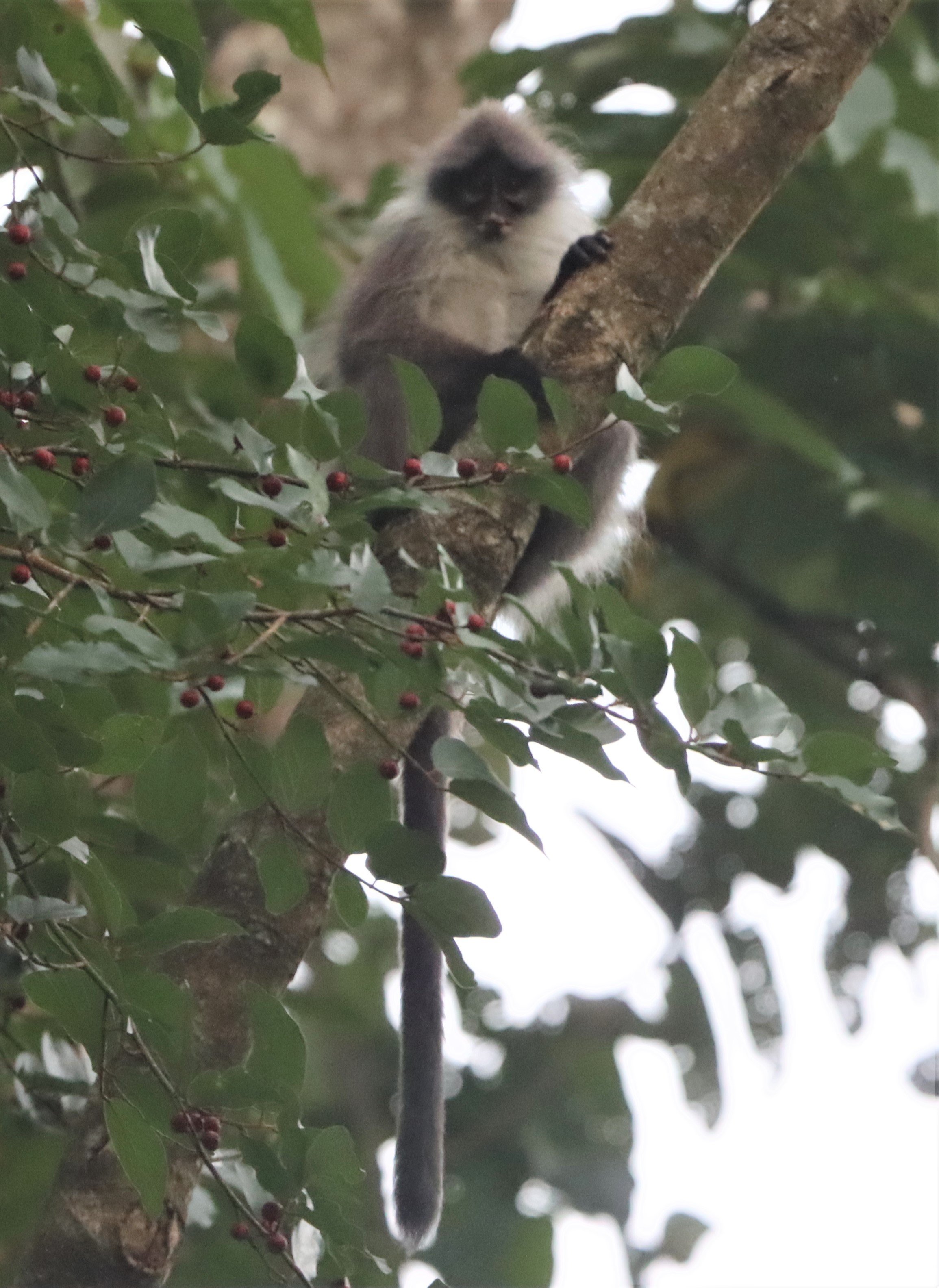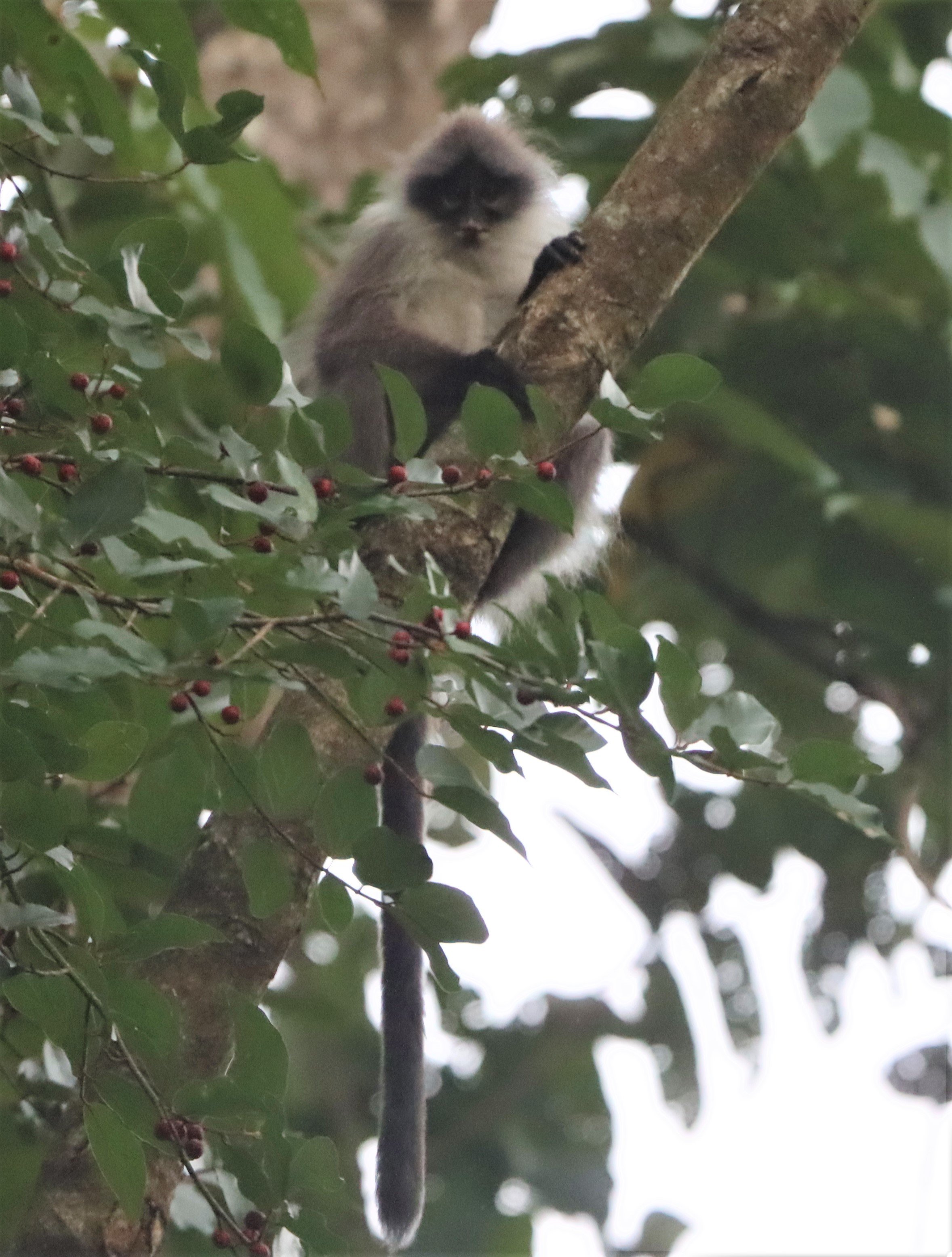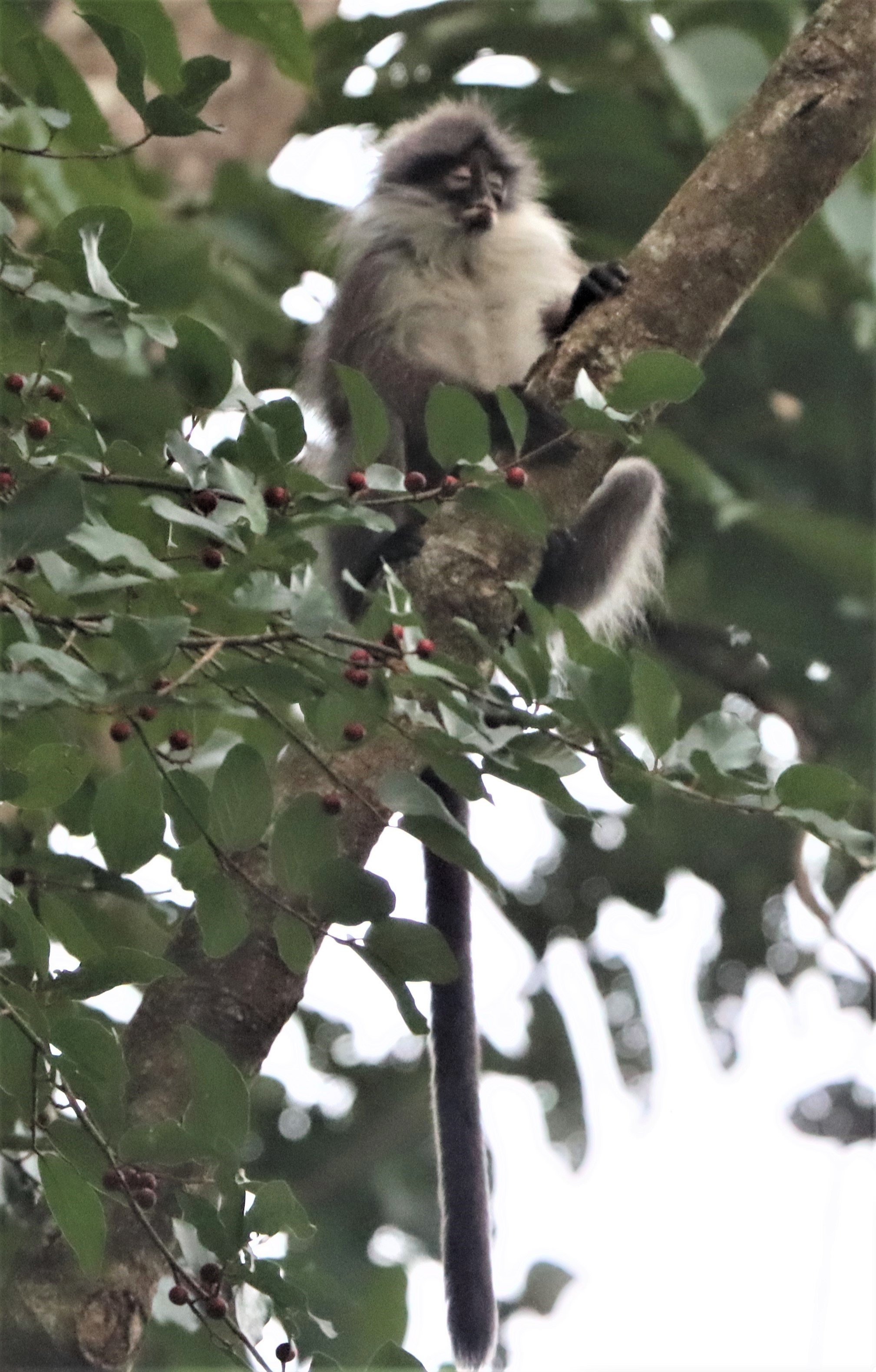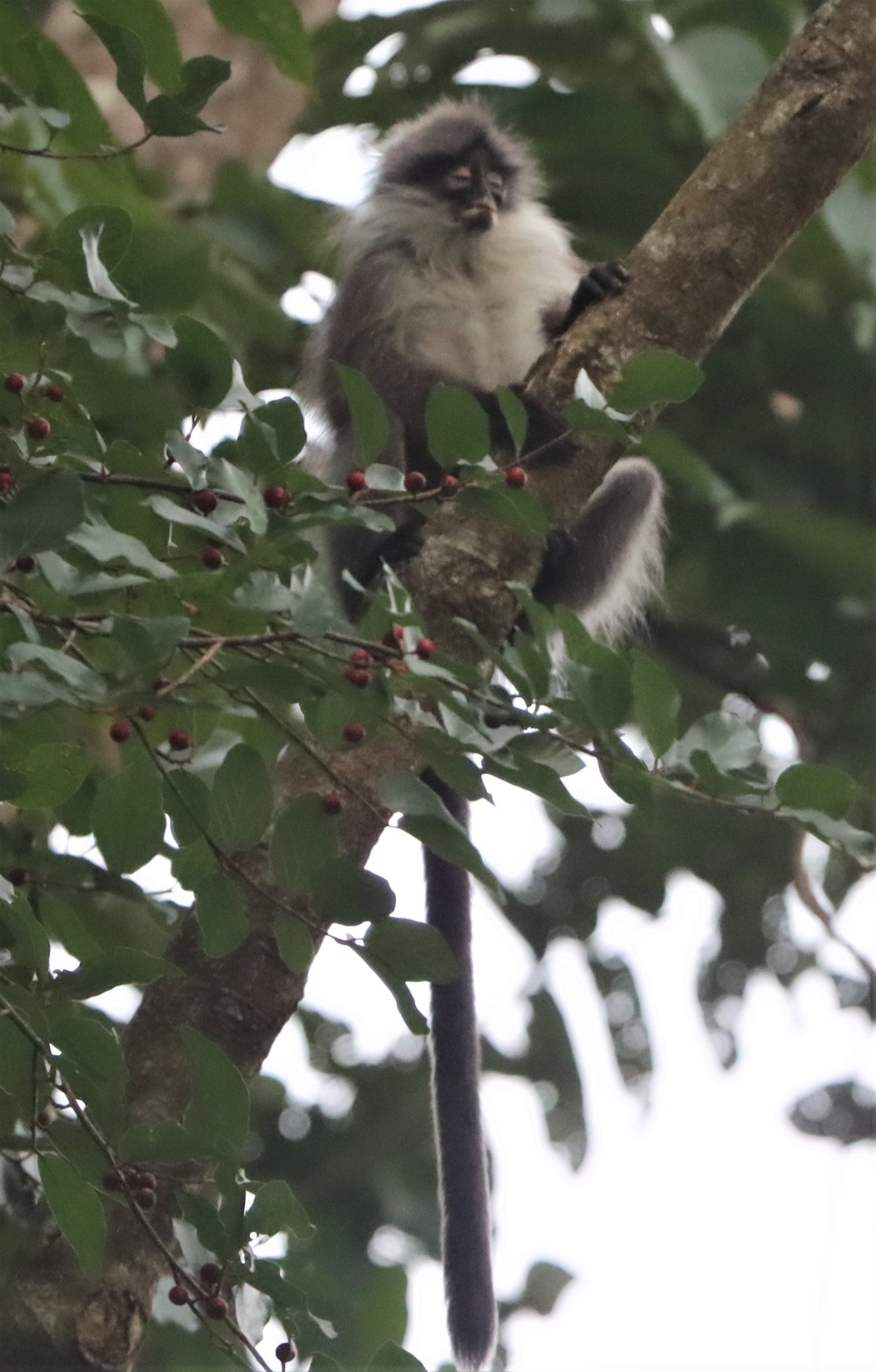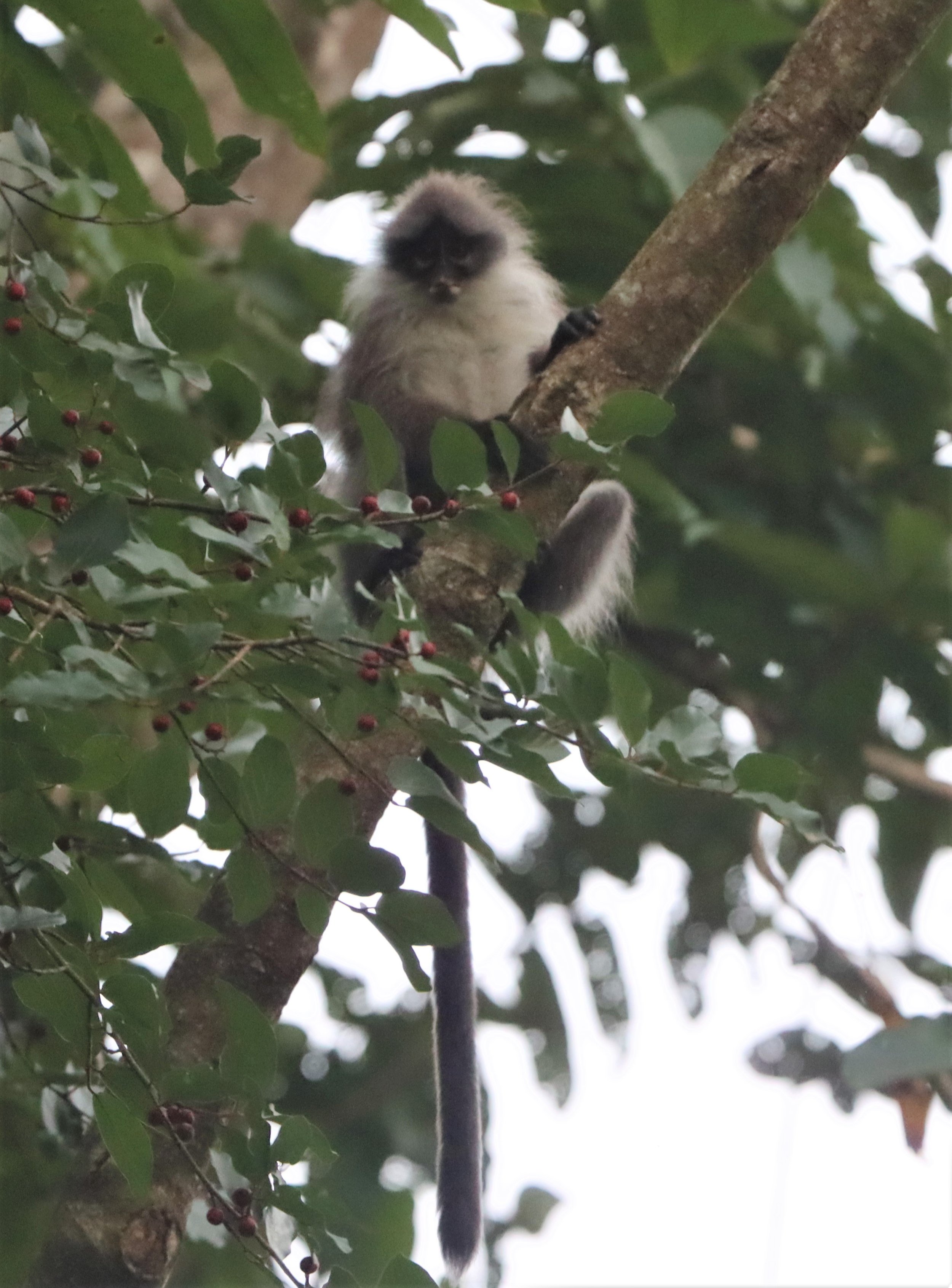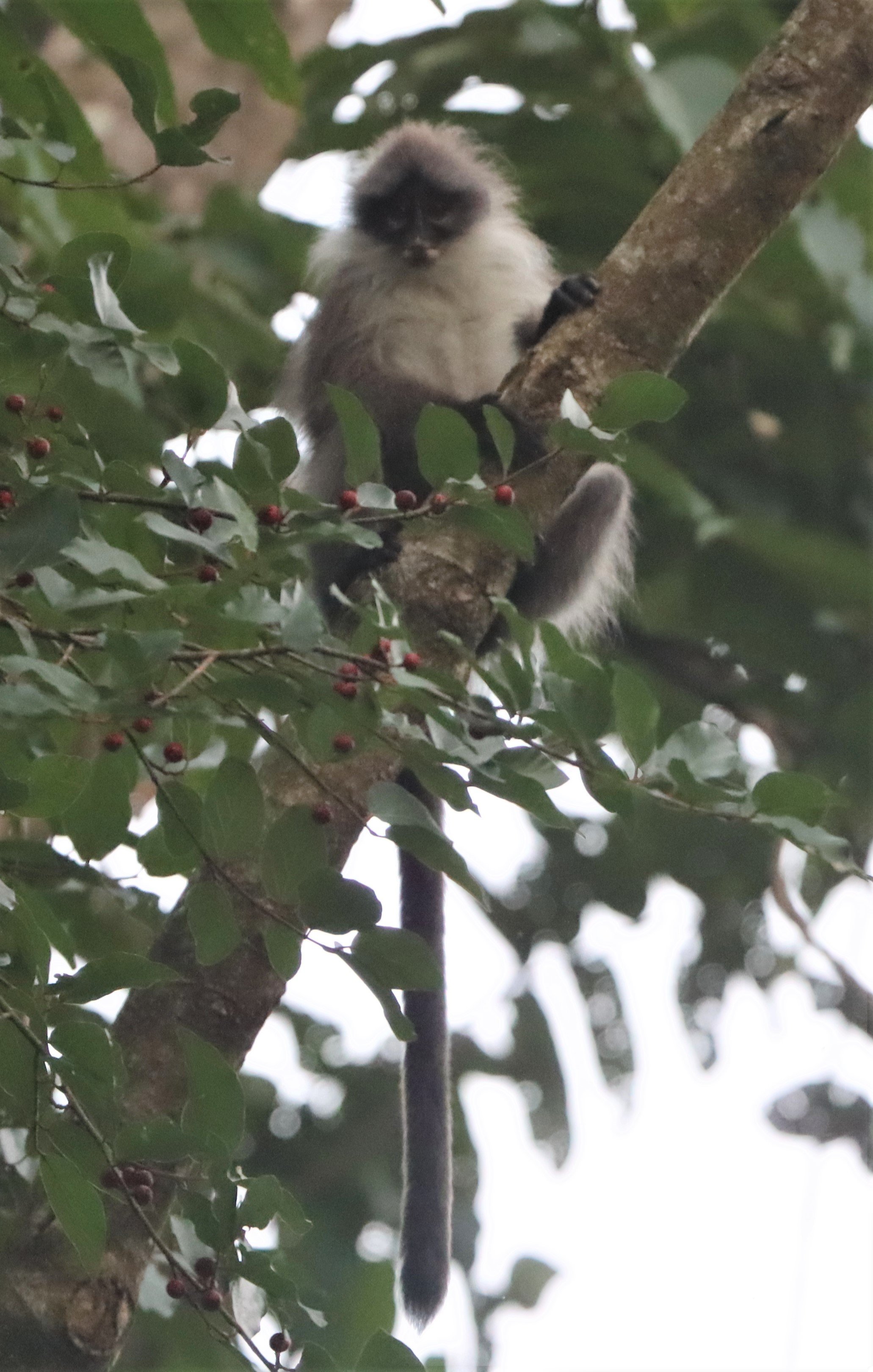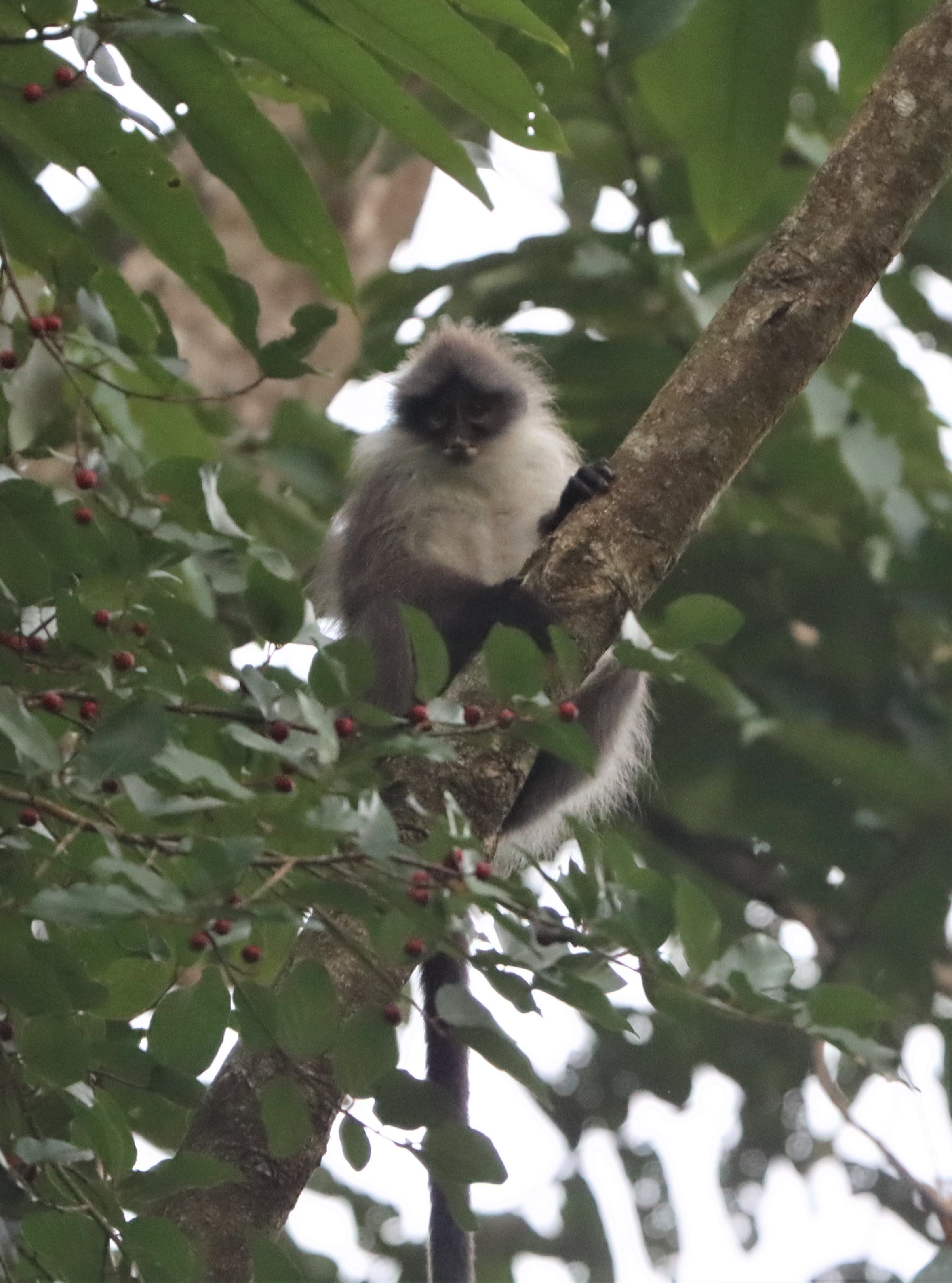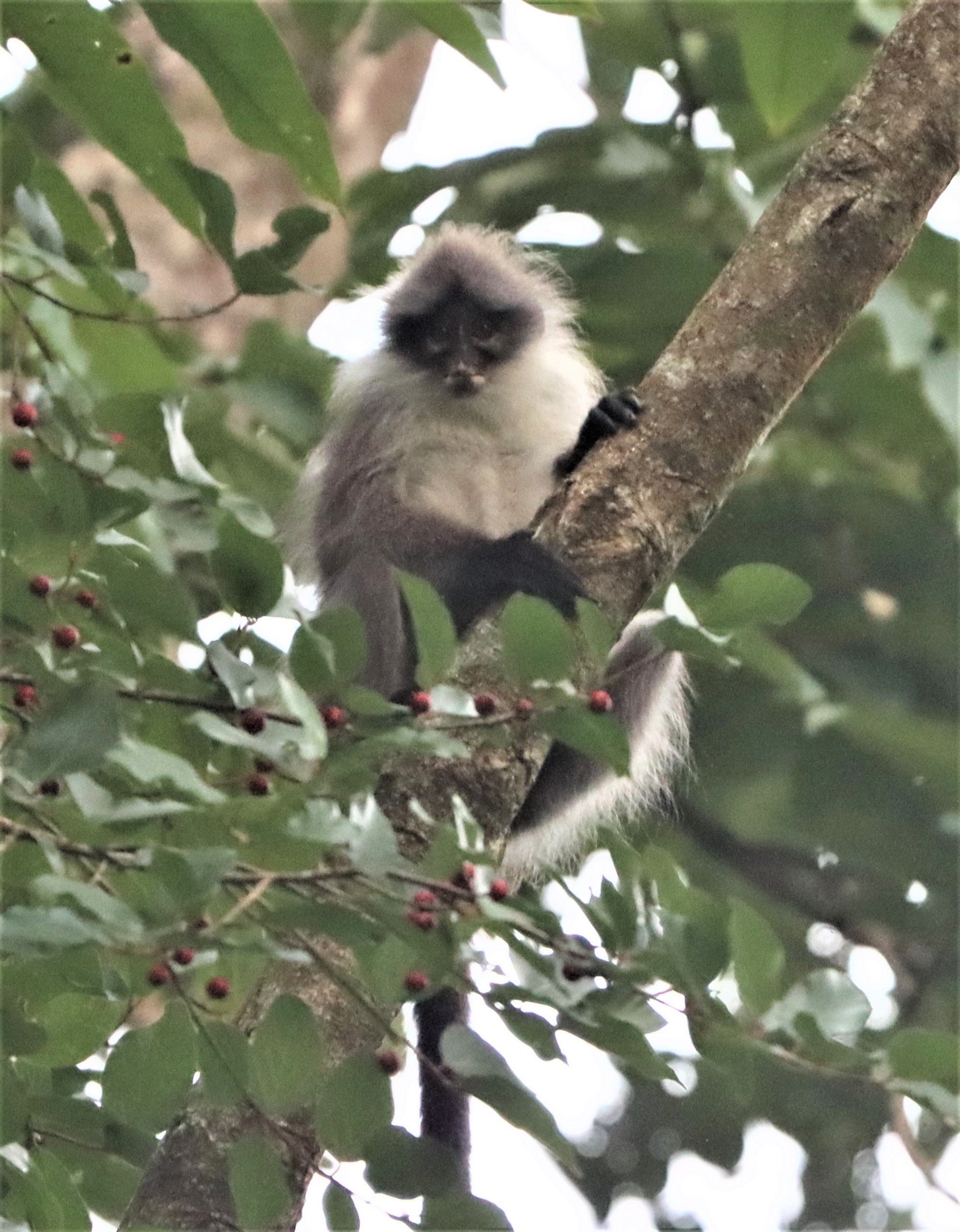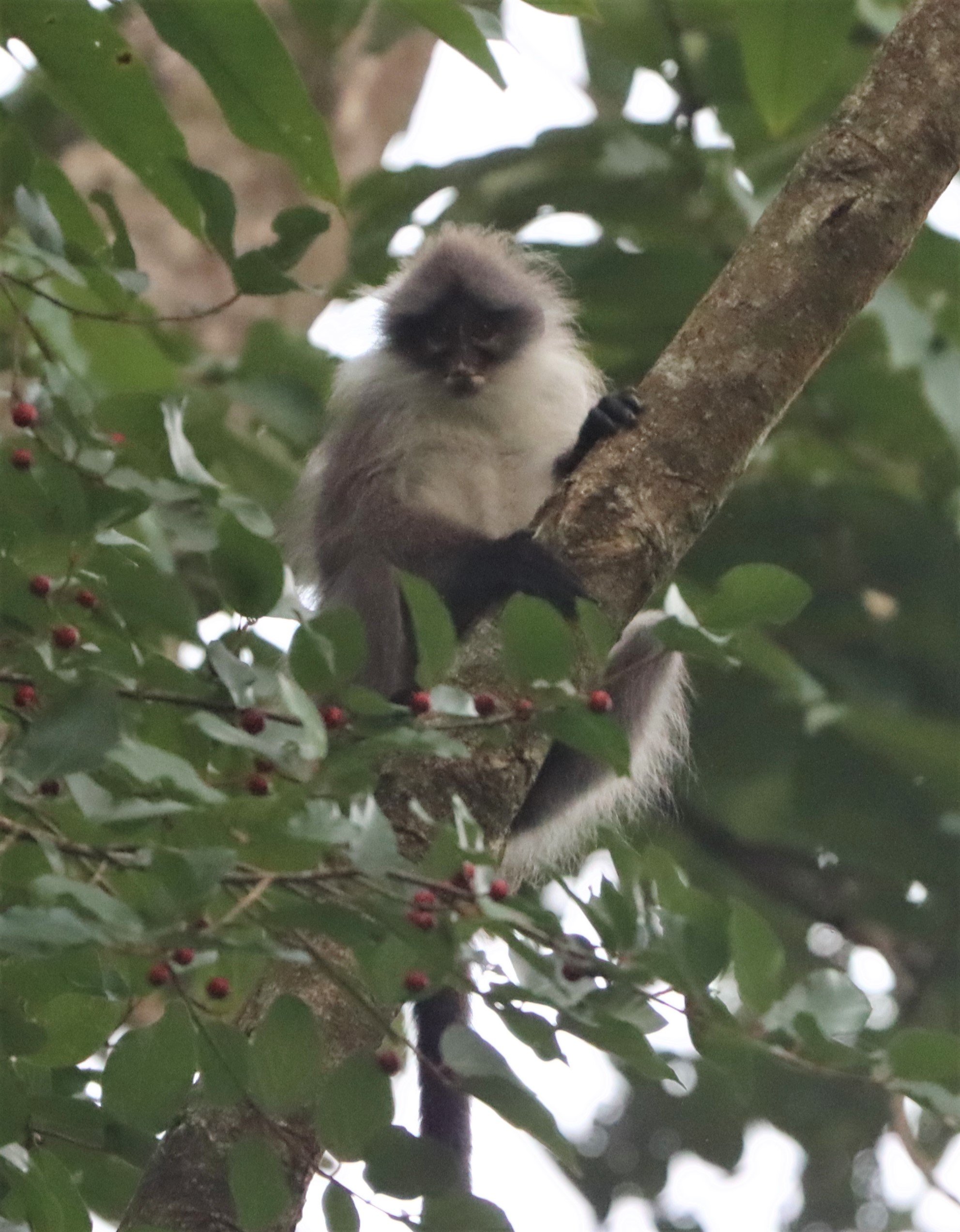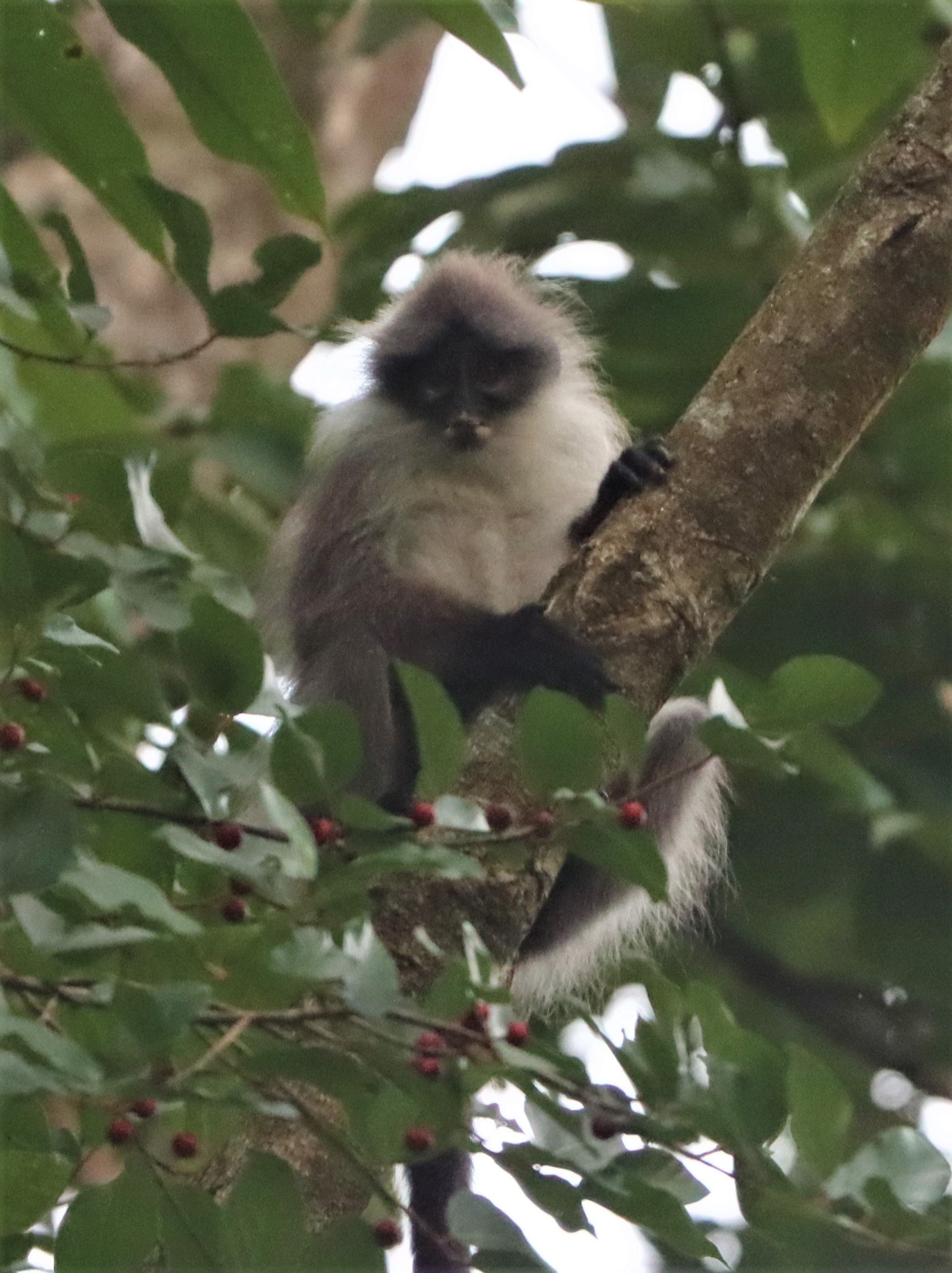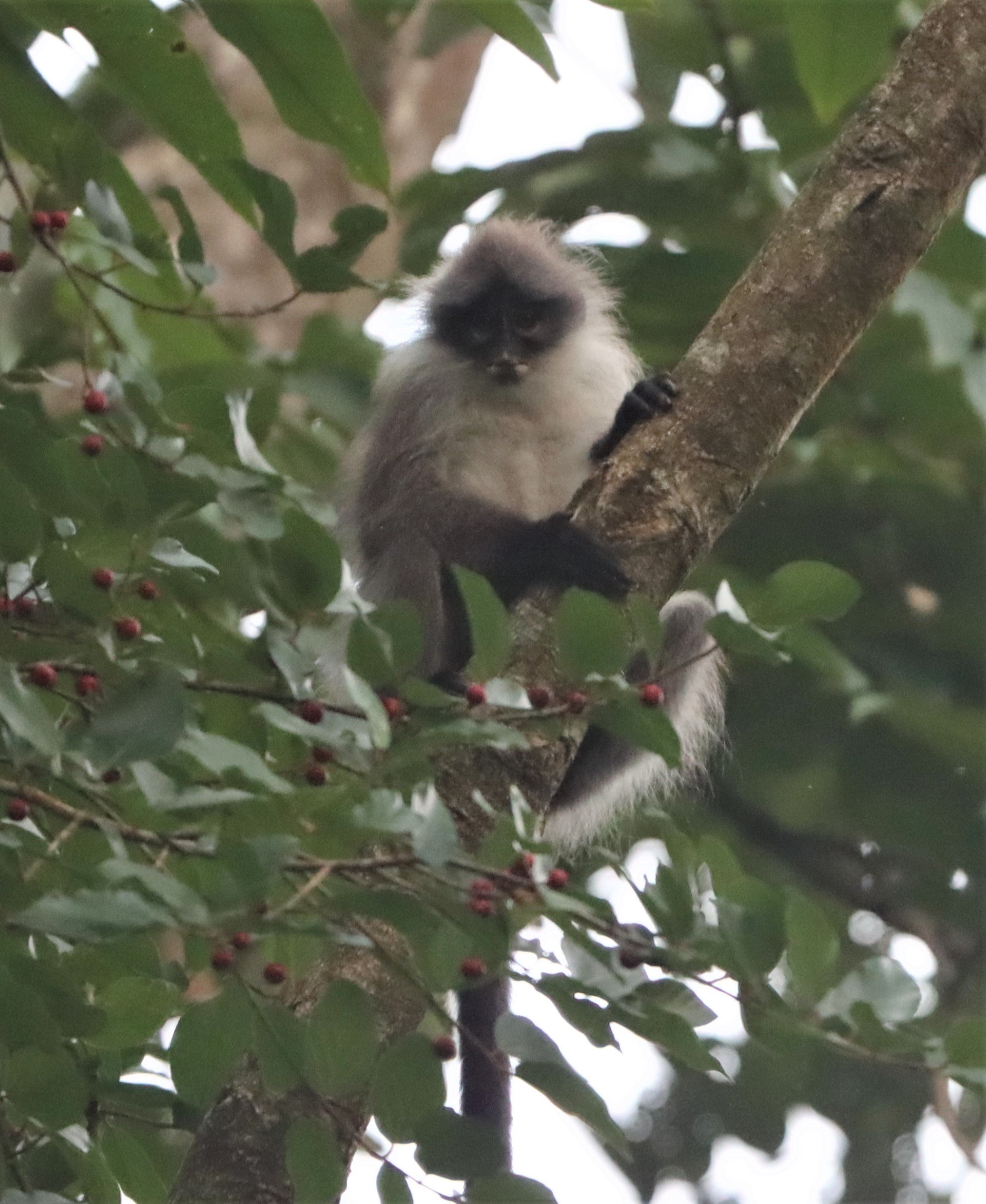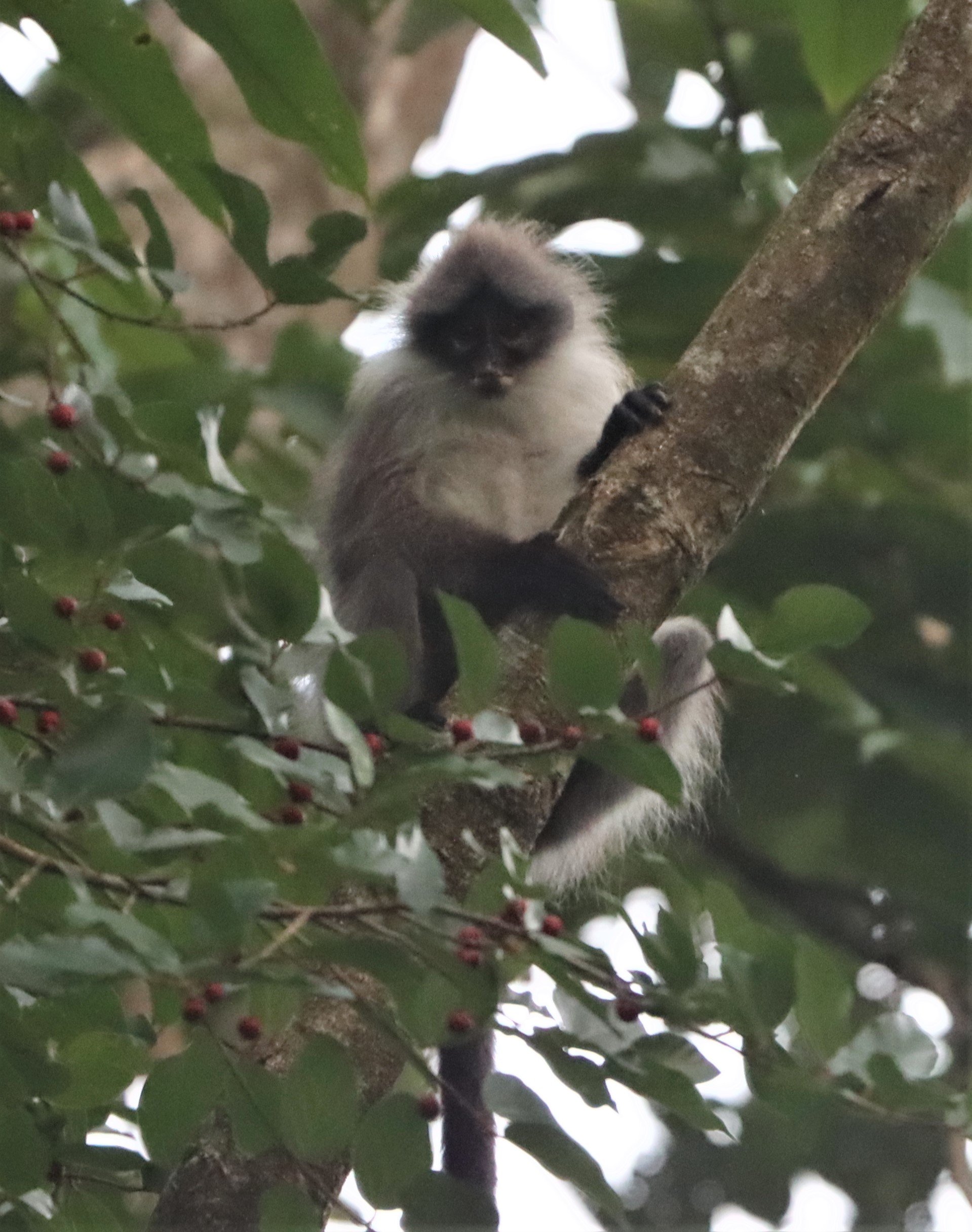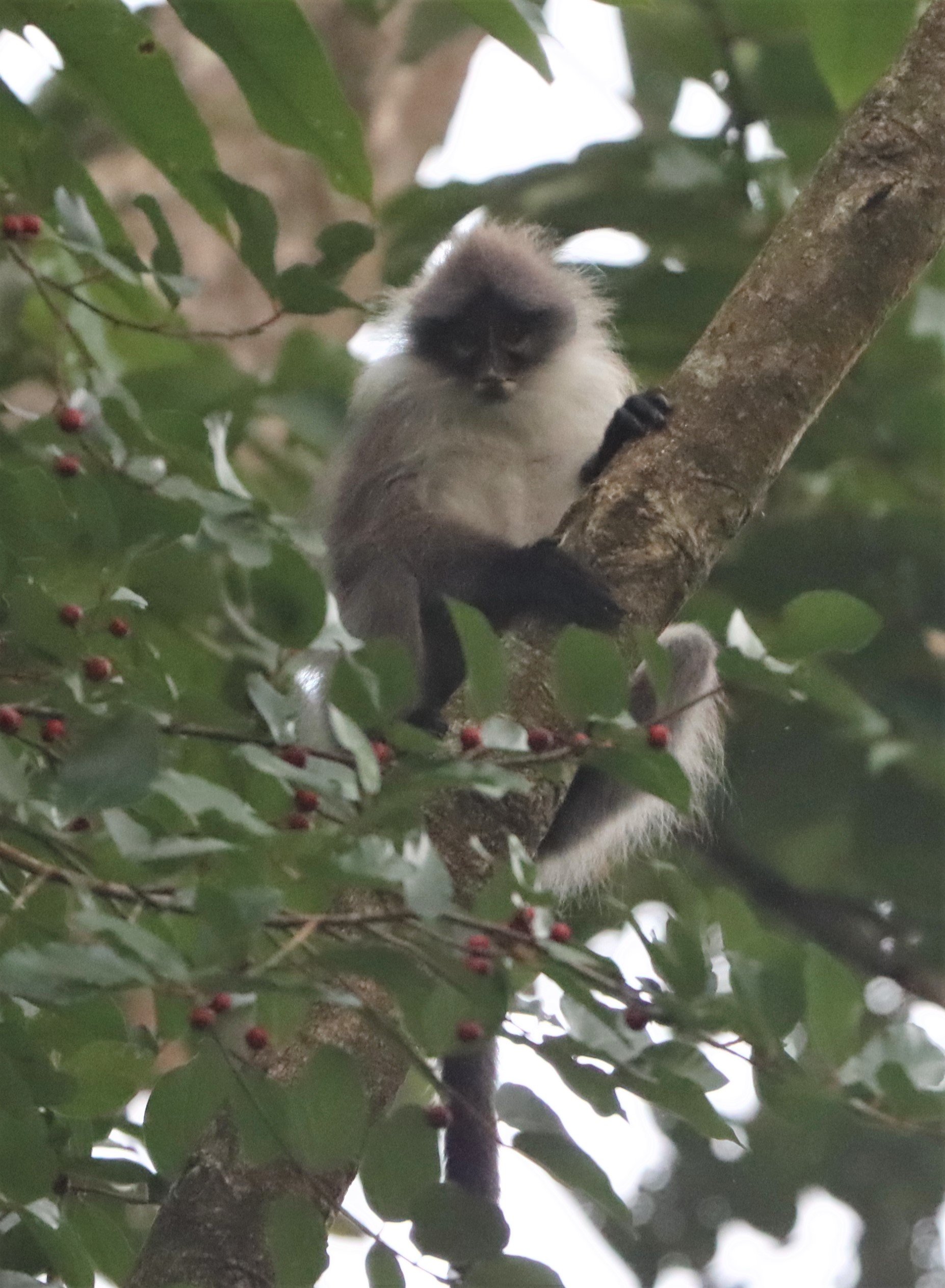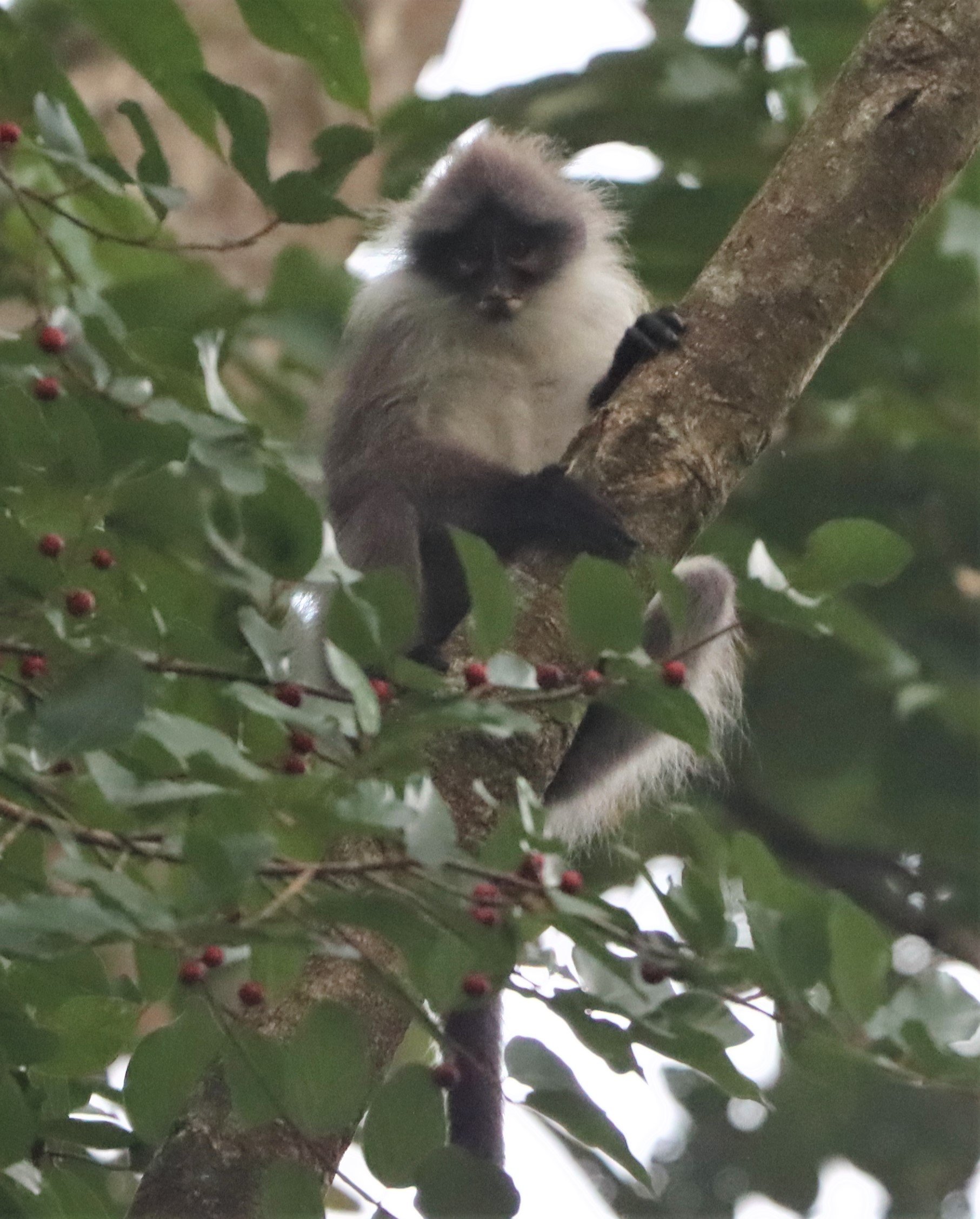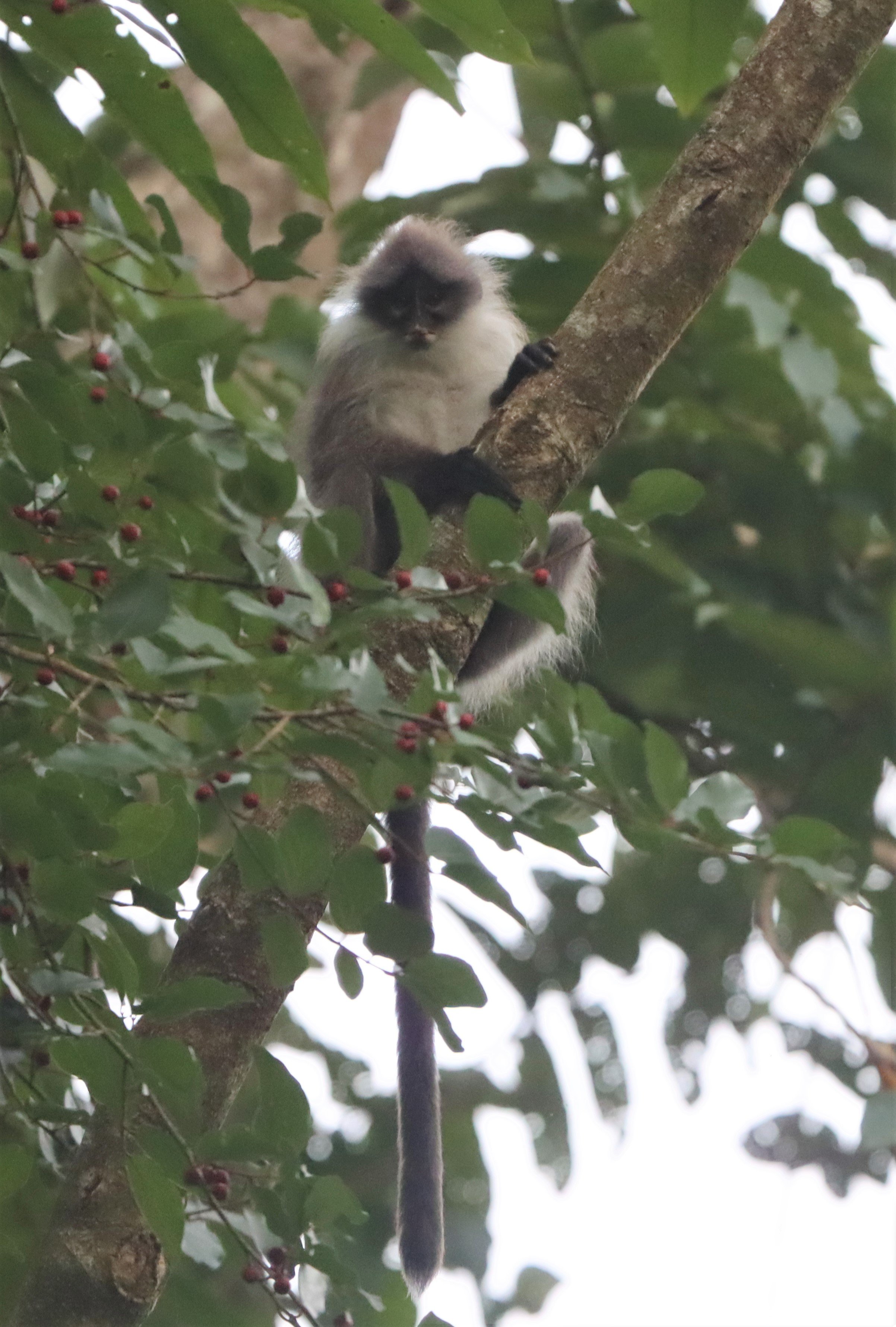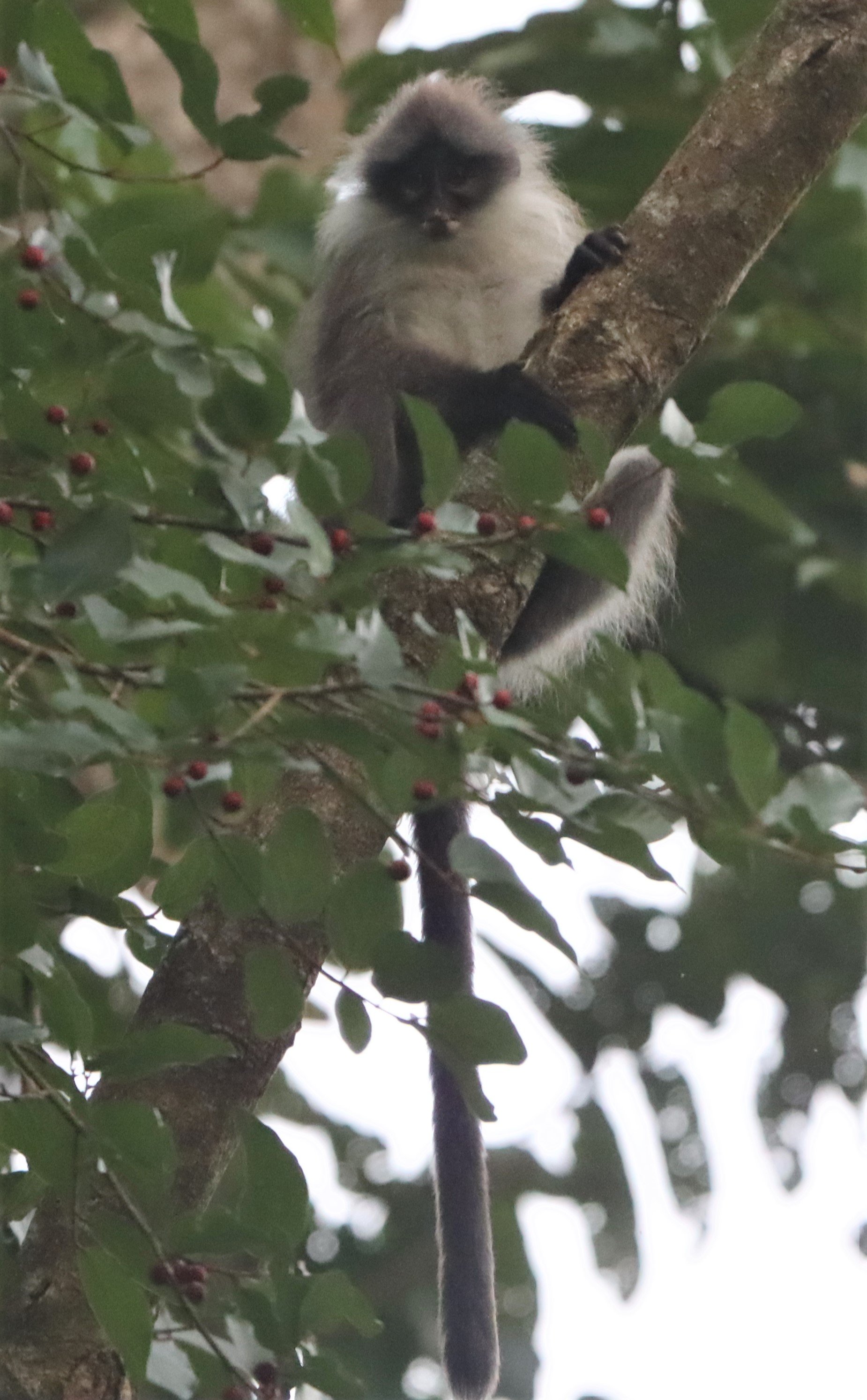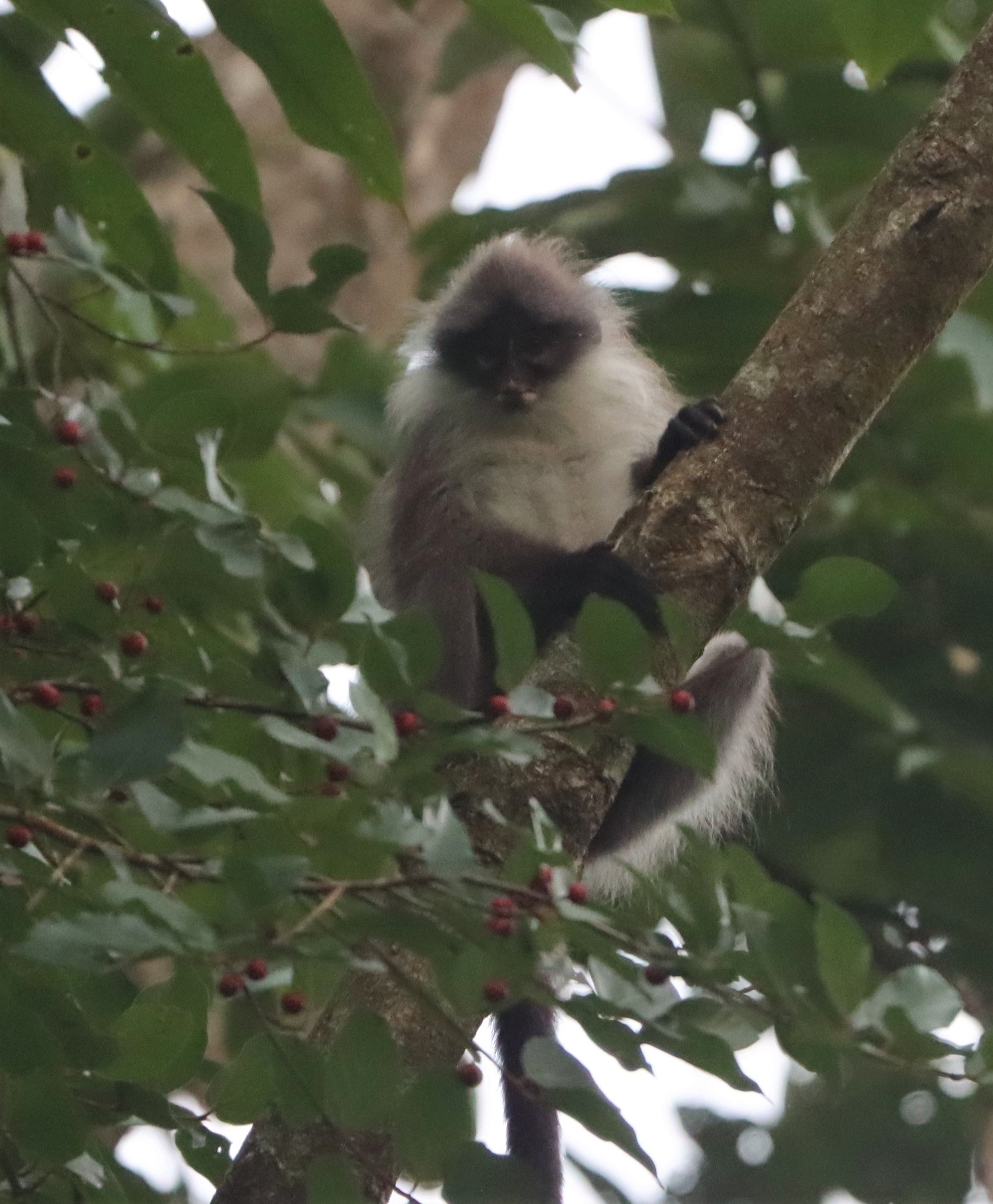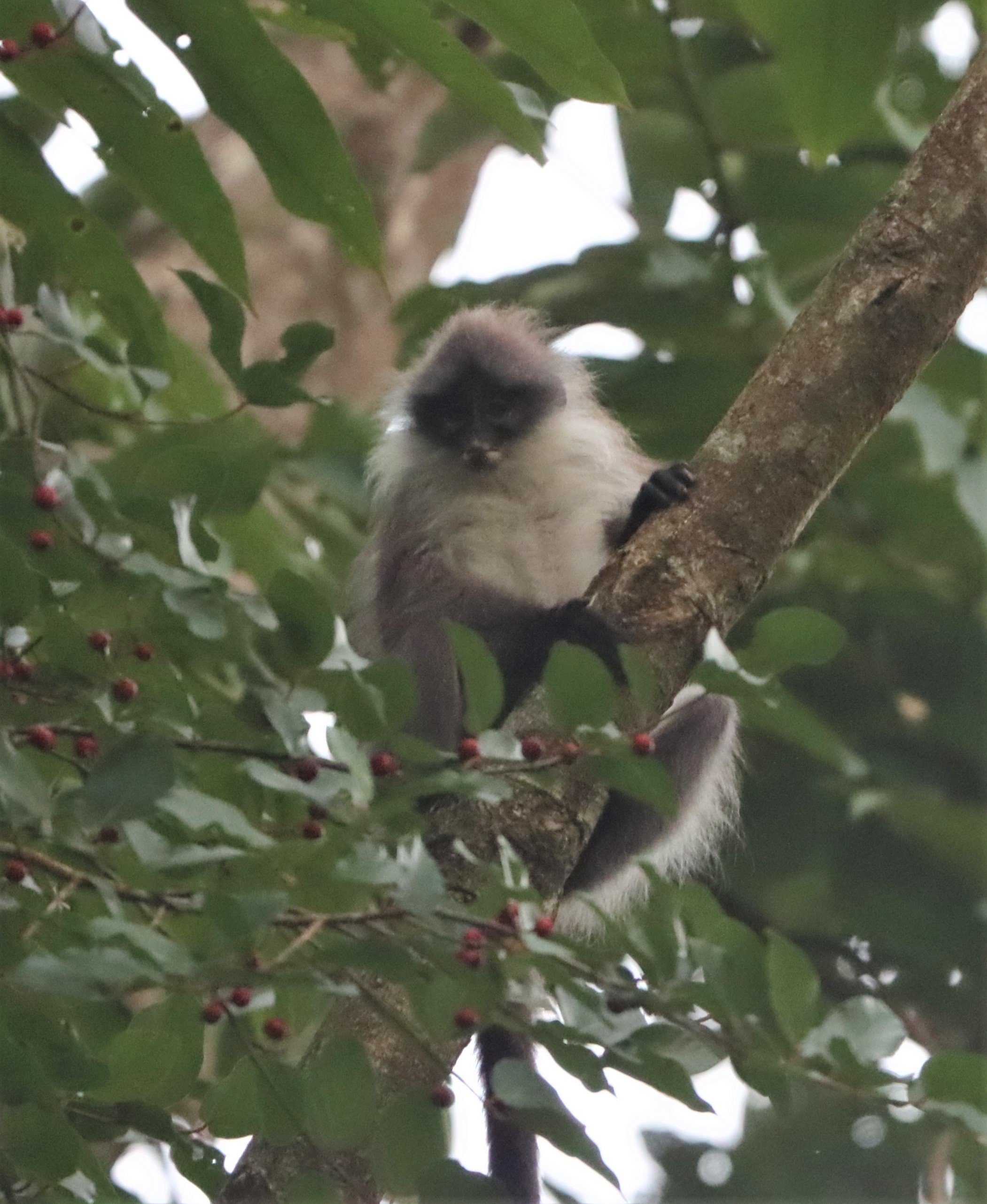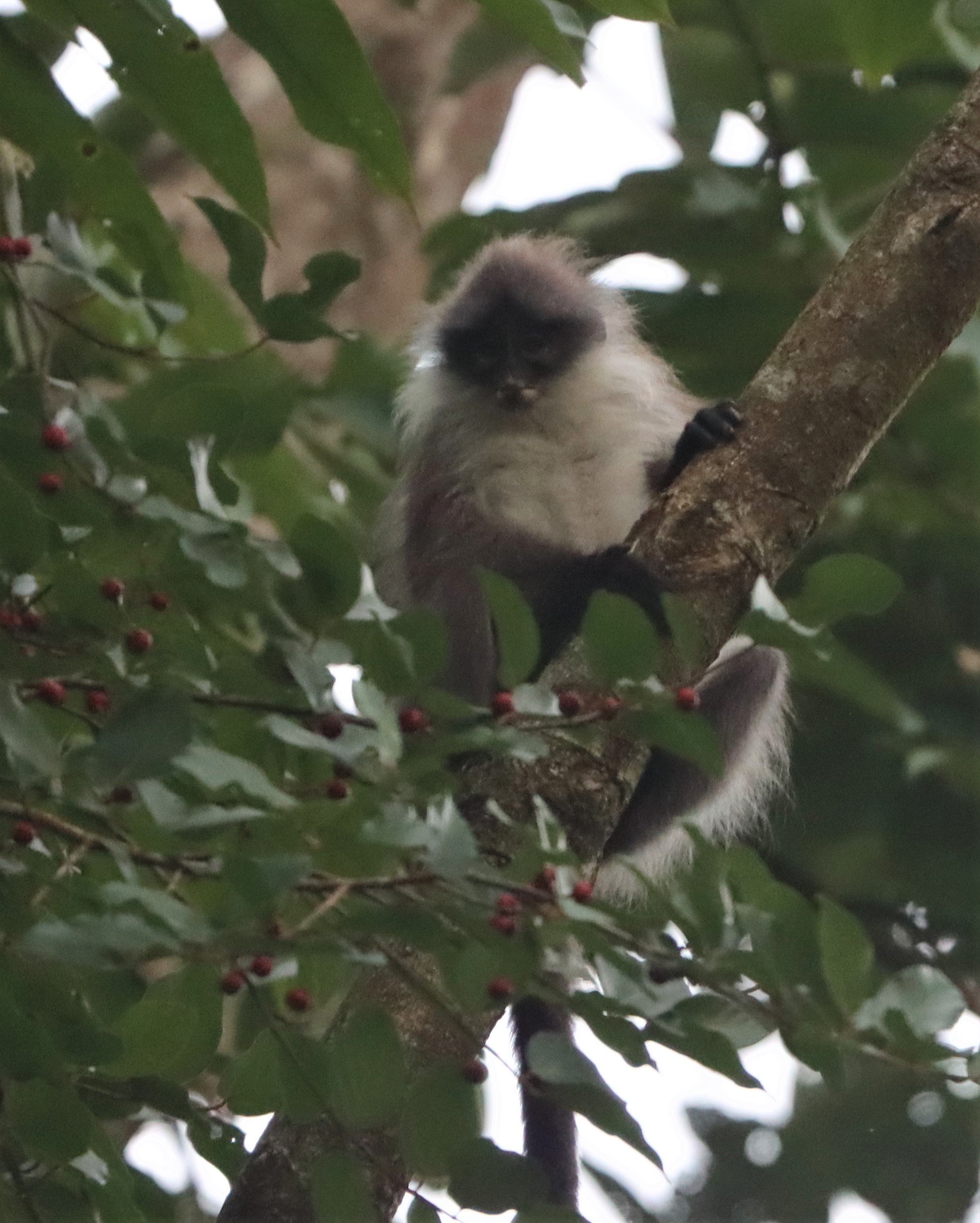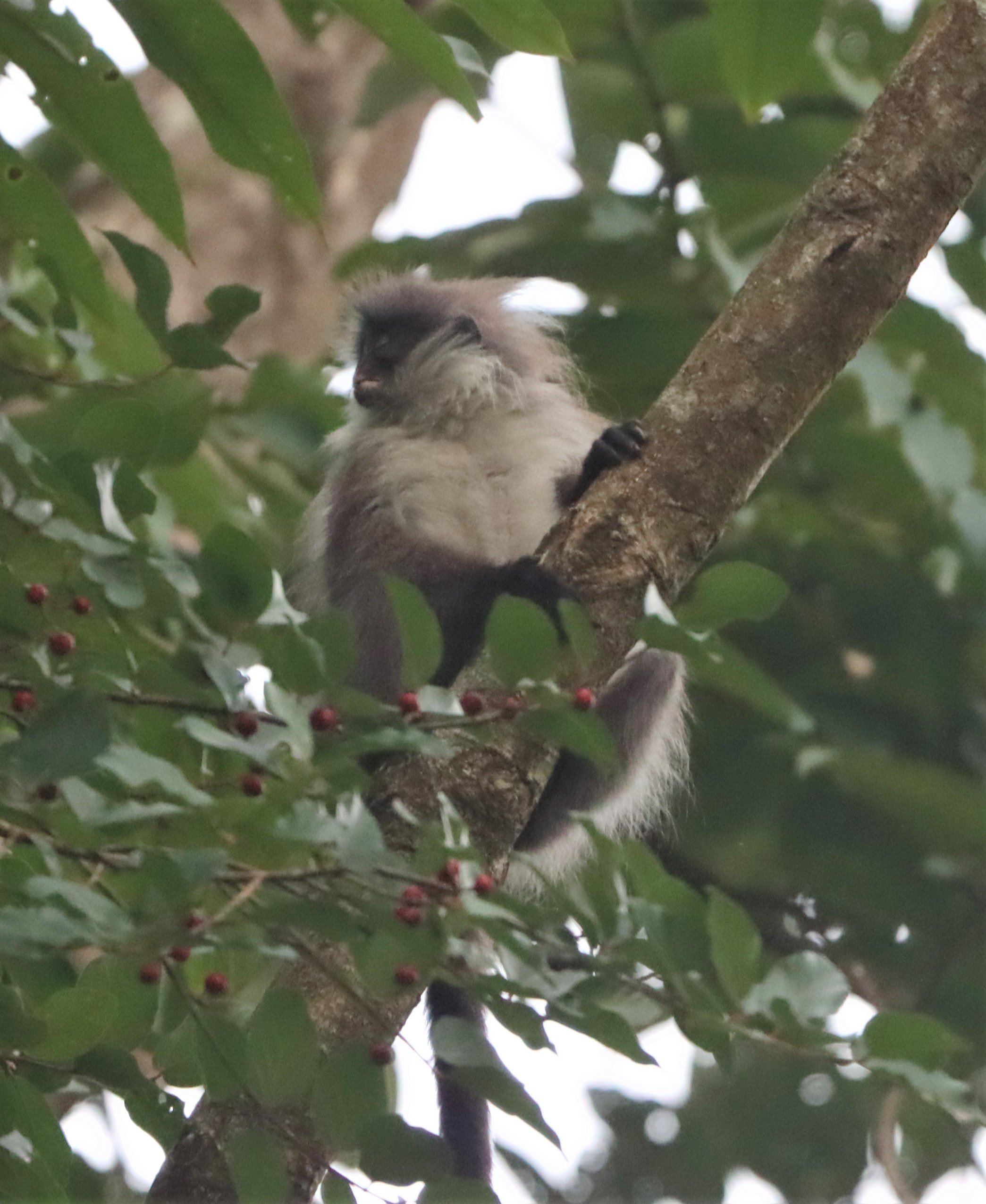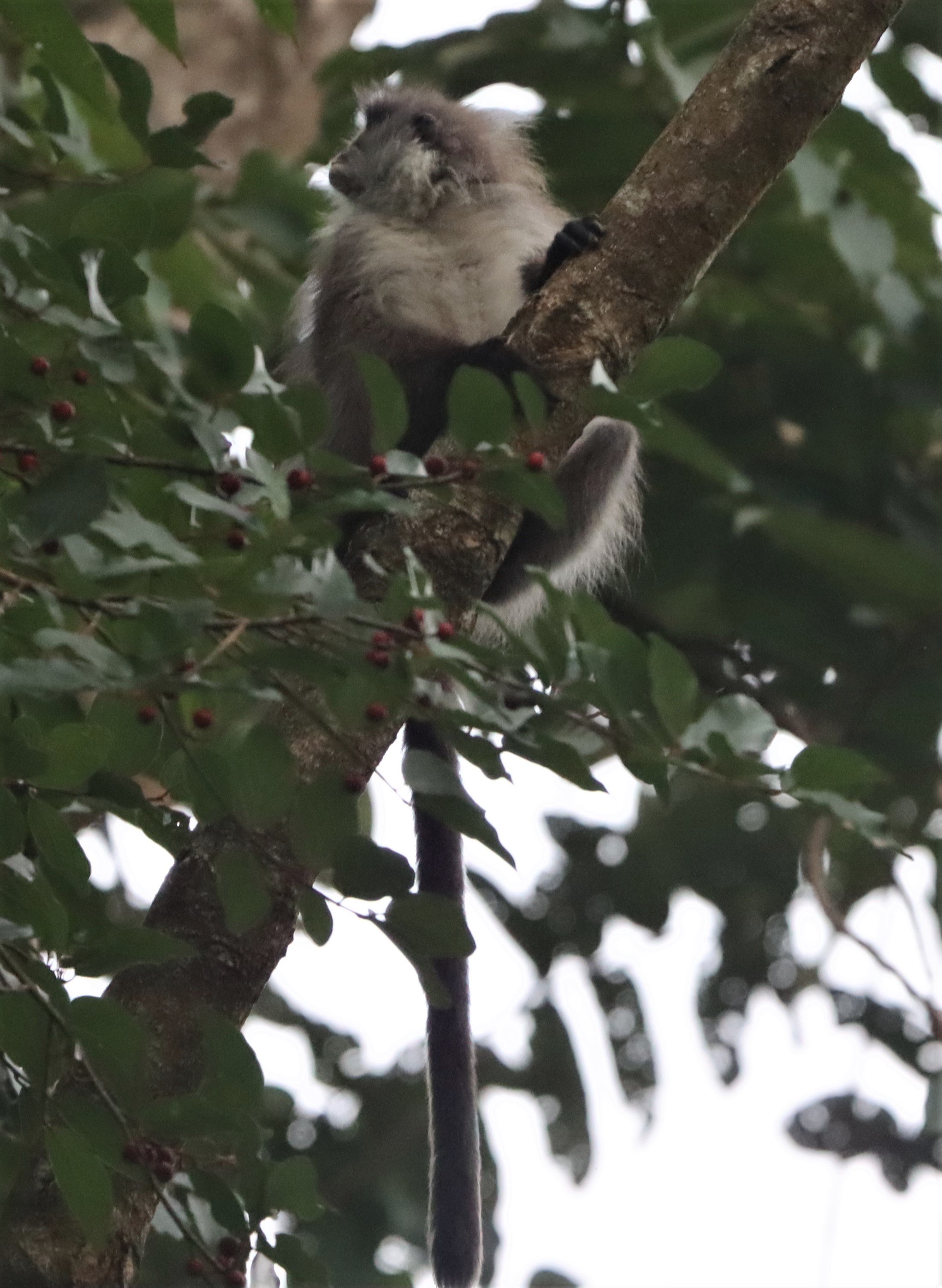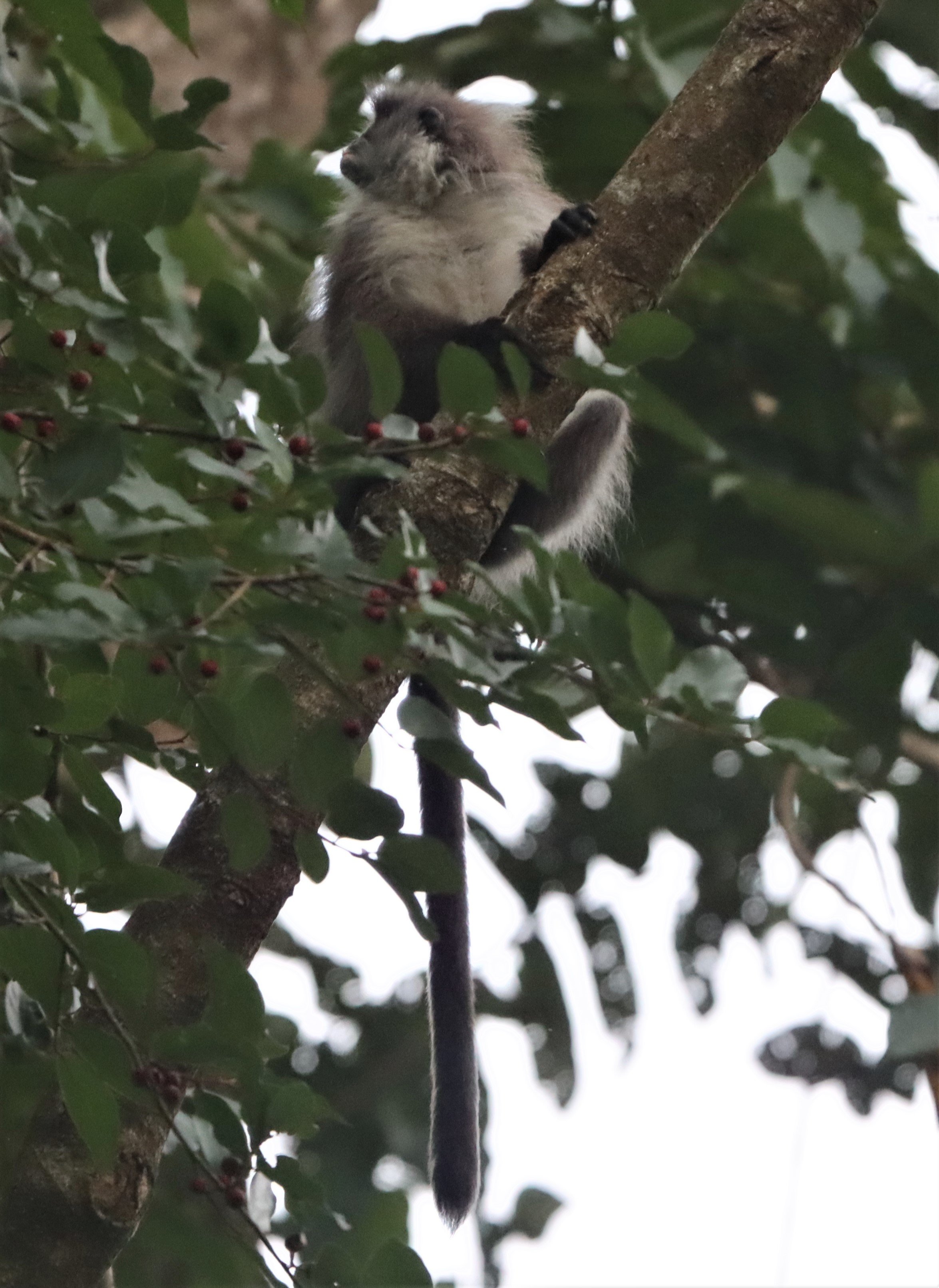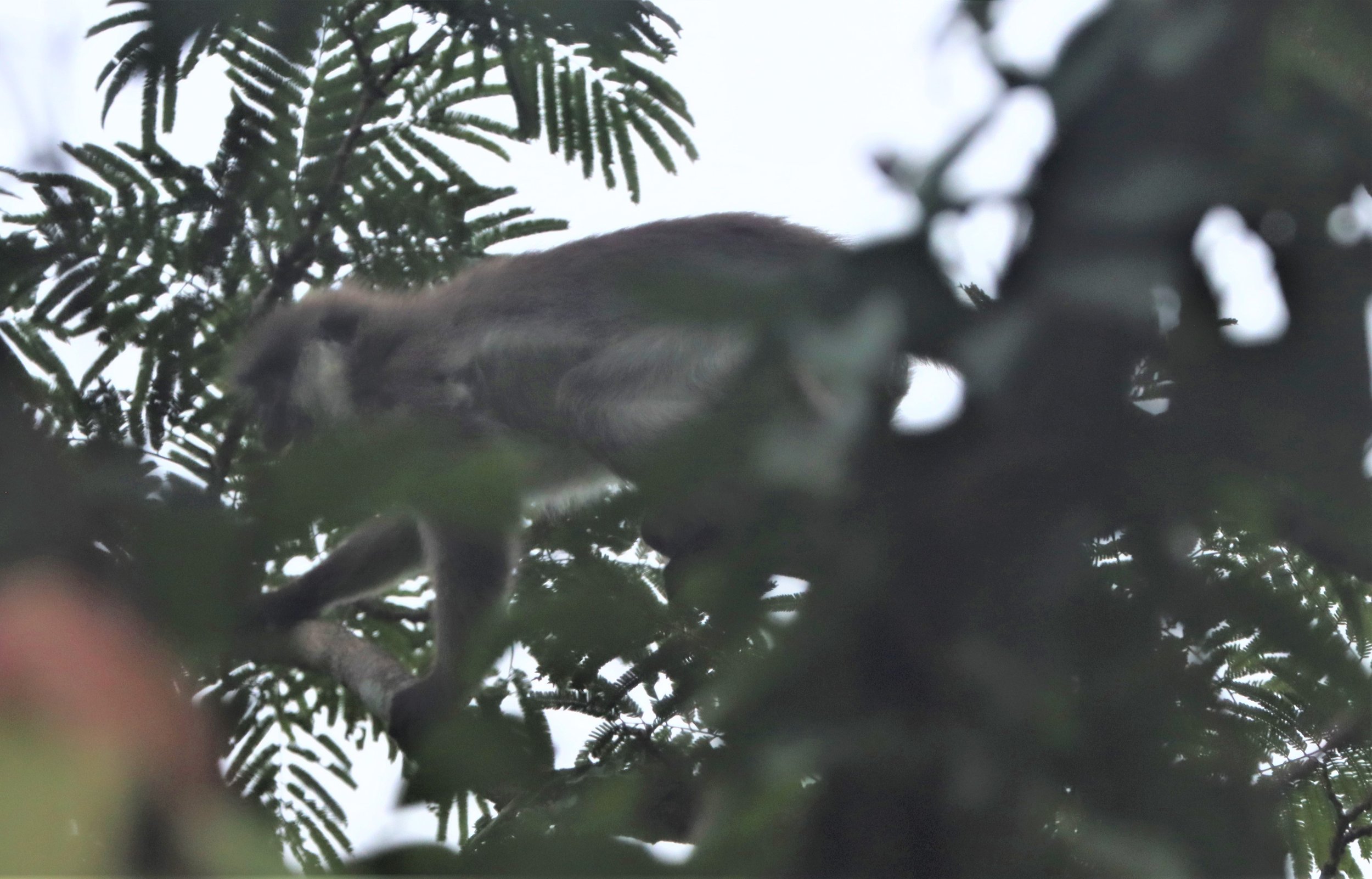
White-thighed Surili
By IUCN Red List of Threatened Species, species assessors and the authors of the spatial data., CC BY-SA 3.0, https://commons.wikimedia.org/w/index.php?curid=12479207
The white-thighed surili (Presbytis siamensis) is a species of primate from the family of old world monkeys (Cercopithecidae). This species lives arboreal amongst the sub-montane forests. It is endemic to the Thai-Malay Peninsula, the Riau Archipelago and Sumatra. In addition, the white-thighed surili contain four subspecies: siamensis (nominate), cana, paenulata and rhionis, are recognized here. Furthermore, they are characterized by the white patches located on the outside of their legs, which is what gives them their name. Additionally, they can be referred to as pale-thighed langur/surili. These primates are an important species for the diversity of forest environments in the Malaysian area.
The white-thighed surili are made up of a common surili build, ranging from around 41–69 cm tall and weighting 5–6.7 kg. Their slender build is covered with a brown-grey fur coat on their backs, with white fur covering their bellies and dark fur on their head. They are known for the white fur on the outsides of their thighs (giving them their name).[4] Additionally, there tails – typically covered in dark fur – can extend roughly 58–85 cm. Compared to adults, infants are born with very light fur with crosses of dark fur along their arms and back.
As an arboreal species, P. siamensis live in subtropical/tropical forest environments. They have been found to occupy moist lowland or swamp areas. In fact, they can even be inhabitants of terrestrial environments; for example, rural gardens. They can be located mainly on the Malay Peninsula, but are also found in Sumatra, as well as some parts of Thailand.
The white-thighed surili live in small unimale-multifemale groups. After mating, females give birth to single infants to which the group of females care for. Due to their arboreal lifestyle, reliance on detection of predators is vital. Male group members are able to call or display a distraction for predators to protect group members. Furthermore, this predator avoidance strategy is shown to be more effective with smaller groups.
P. siamensis is a member of old world monkeys. P. siamensis itself contains four subspecies: siamensis, cana, paenulata, and rhionis. Research suggests the white-thighed surili includes P. natunae (Natuna Island surili) as a subspecies; however both have been considered subspecies of P. femoralis (Banded surili). Alternatively, research suggests three species are endemic to Malaysia: P. siamensis, P. femoralis and P. robinsoni (Robinson's Banded langur). Through mitochondria DNA analysis, these three species are split into two separate clades: P. femoralis on its own, P. robinsoni and P. siamensis in the other. This was due to the sharing of unique nucleotides between P. robinsoni and P. siamensis. There continues to be ongoing evolution of Robinson's banded langur and the white-thighed surili








































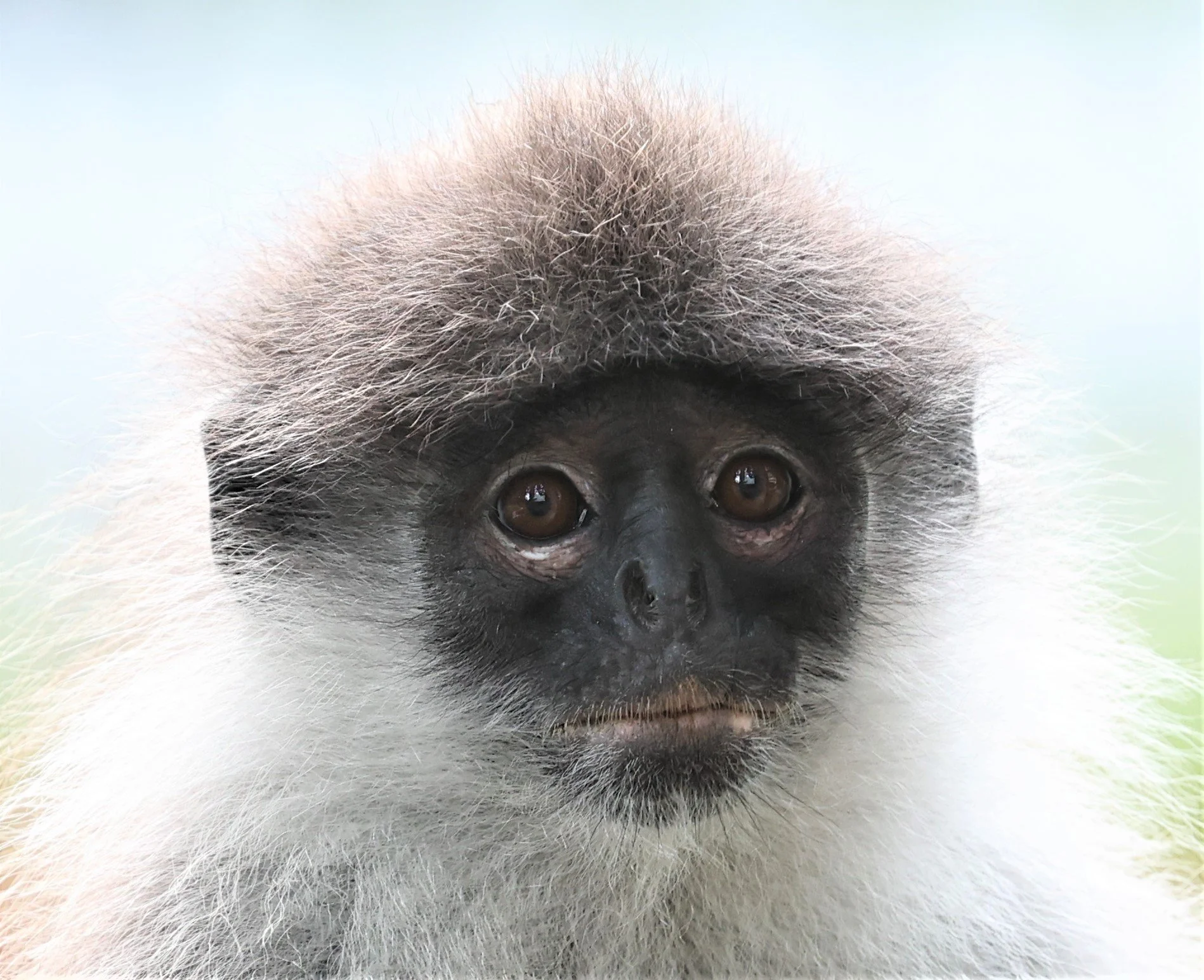



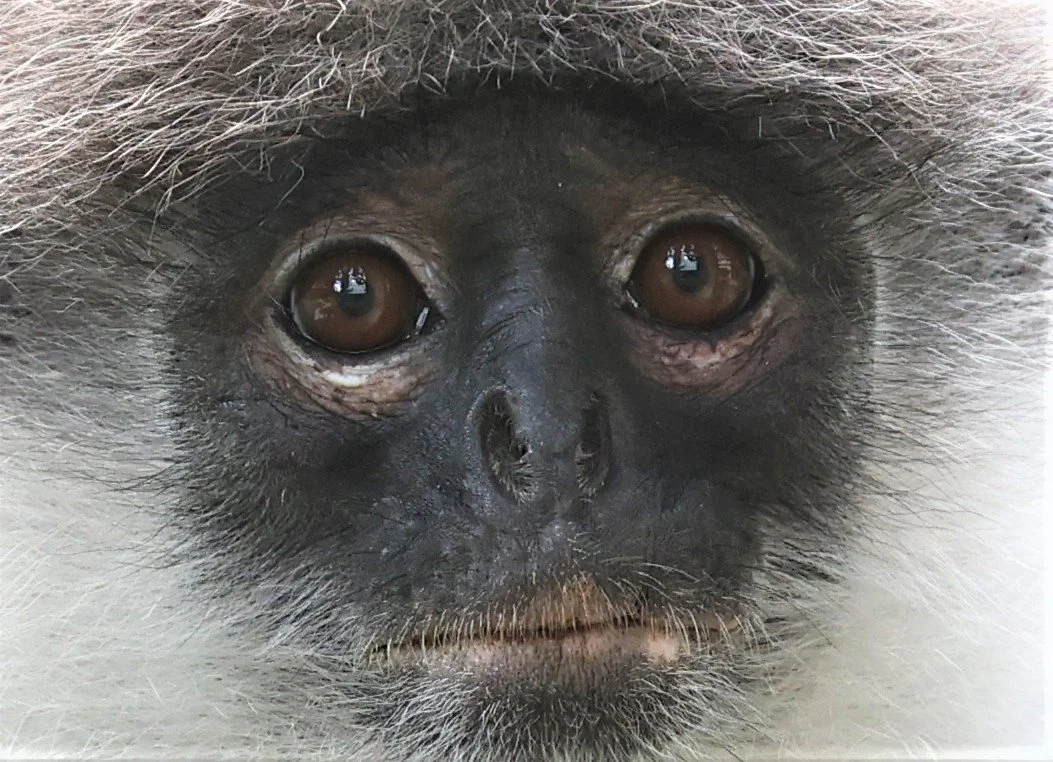


















































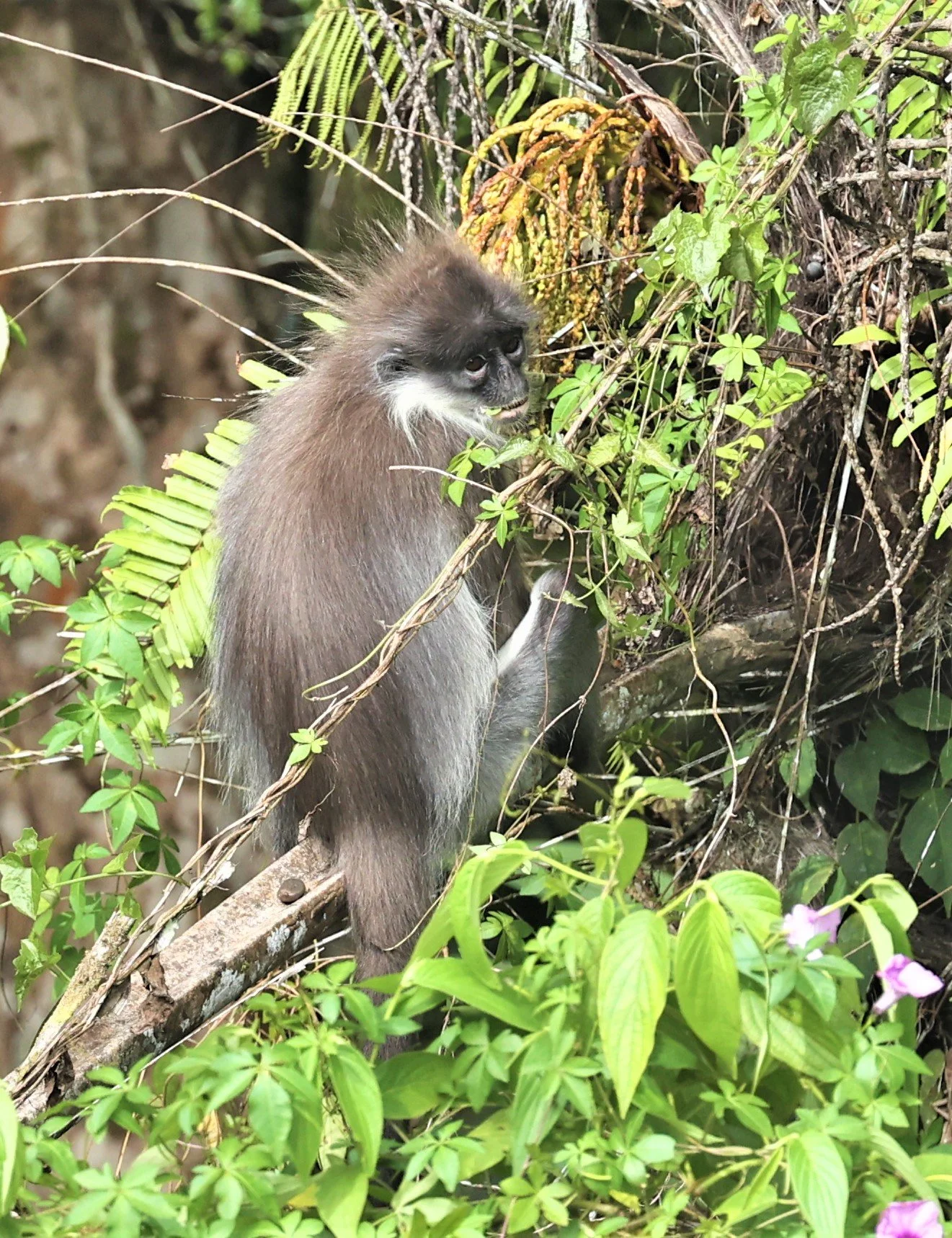





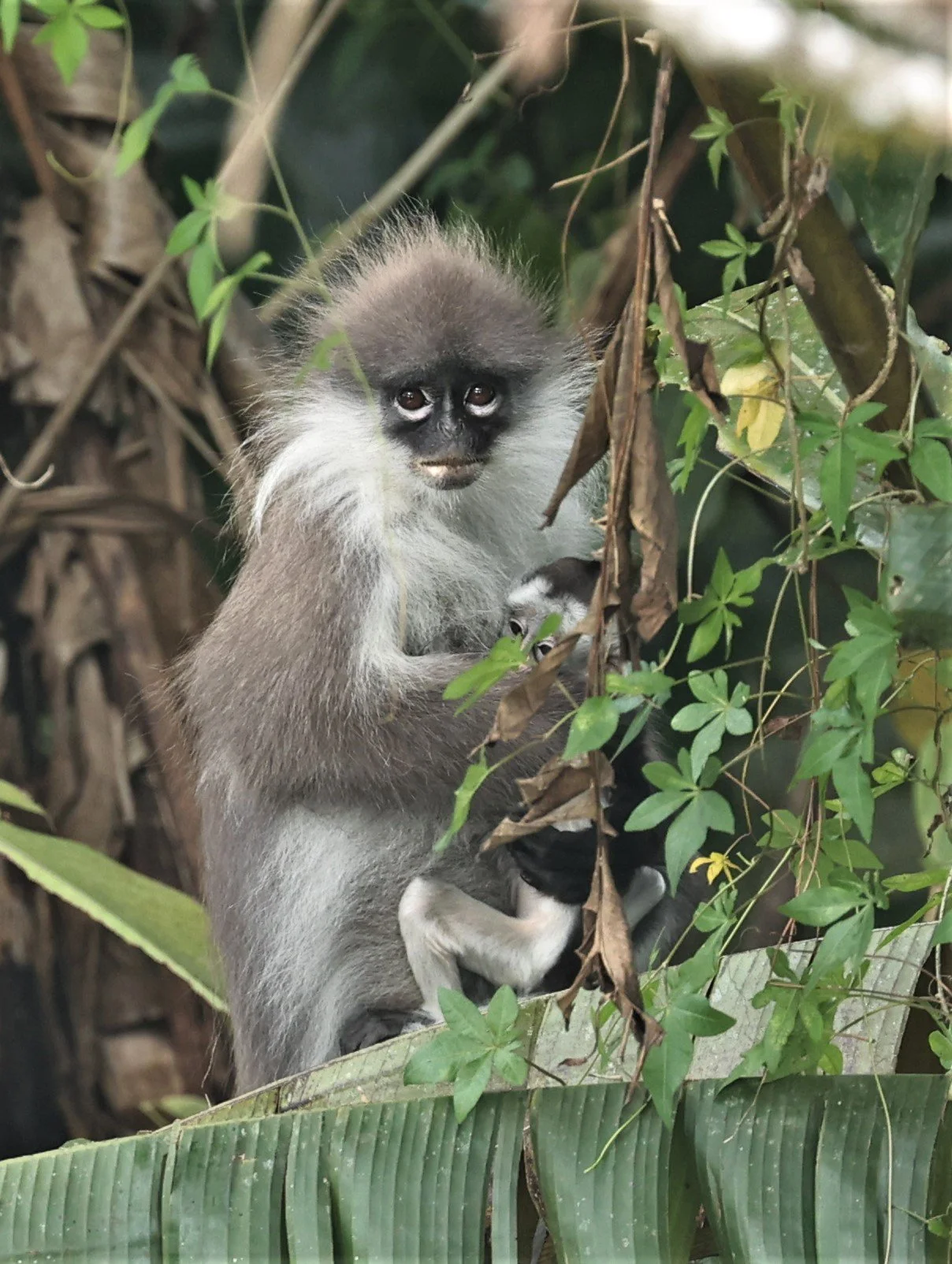
























Hala Bala Wildlife Sanctuary population. Seen several times in group sizes ranging from 5 individuals to well over 50 in one mega-troop near Stream 3.
